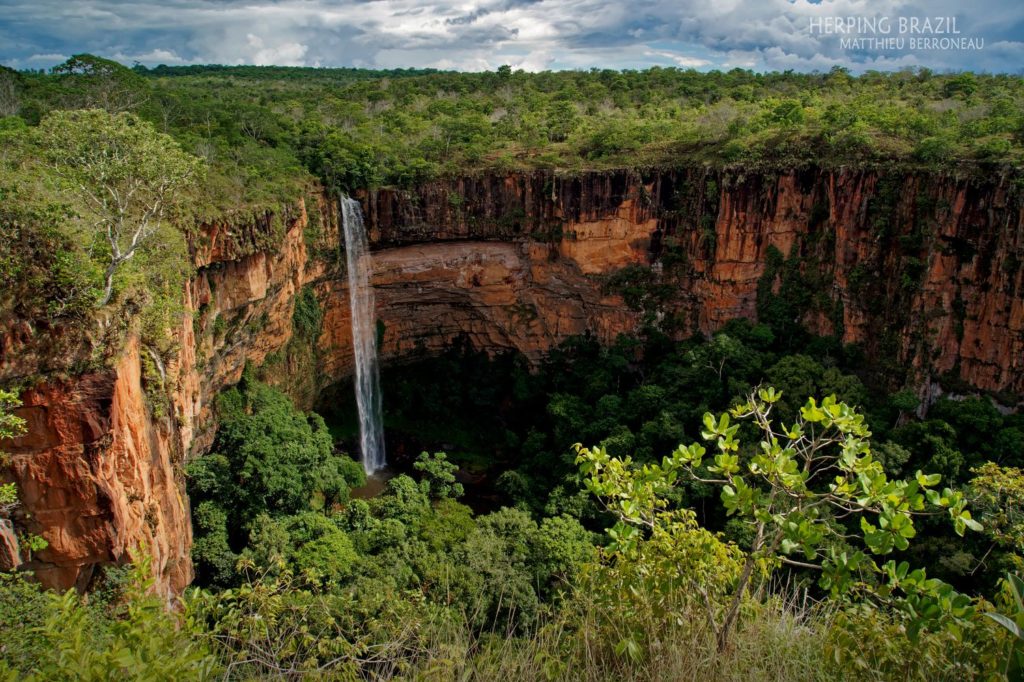En cette fin d’année 2019 s’est déroulée l’expédition herpétologique dans le Pantanal, organisée par l’agence HerpingBrazil, et dont j’avais l’honneur d’être le “tour leader”. Mon but était d’accompagner les participants dans la découverte de l’herpétofaune locale et d’organiser des sessions photos pour les participants.
HerpingBrazil Pantanal Expedition 2019 – Small trip report on 10 exceptional days
At the end of 2019, the herpetological expedition took place in the Pantanal, organized by the agency HerpingBrazil, and of which I had the honor of being the “tour leader”. My goal was to support the participants in the discovery of the local herpetofauna and to organize photo sessions for the participants.
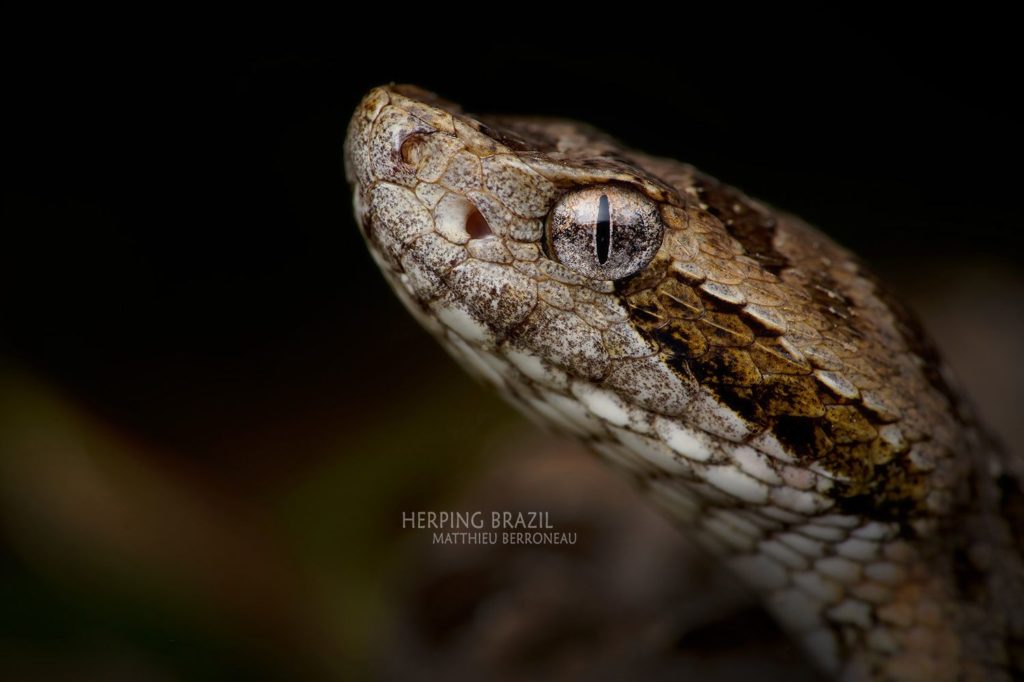
Bothrops matogrossensis
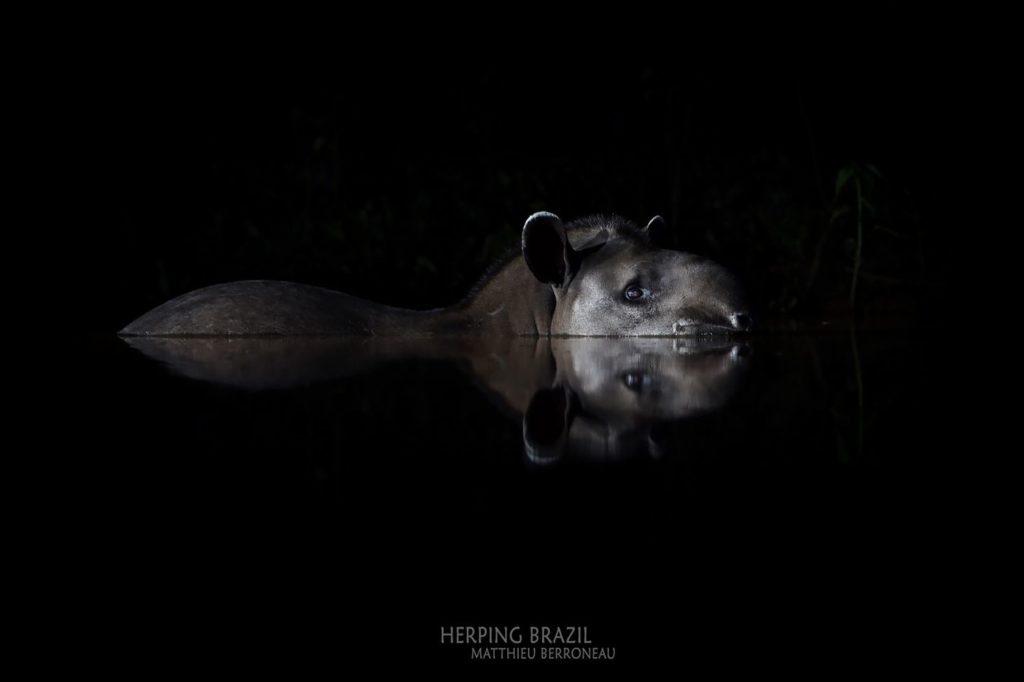
Tapirus terrestris
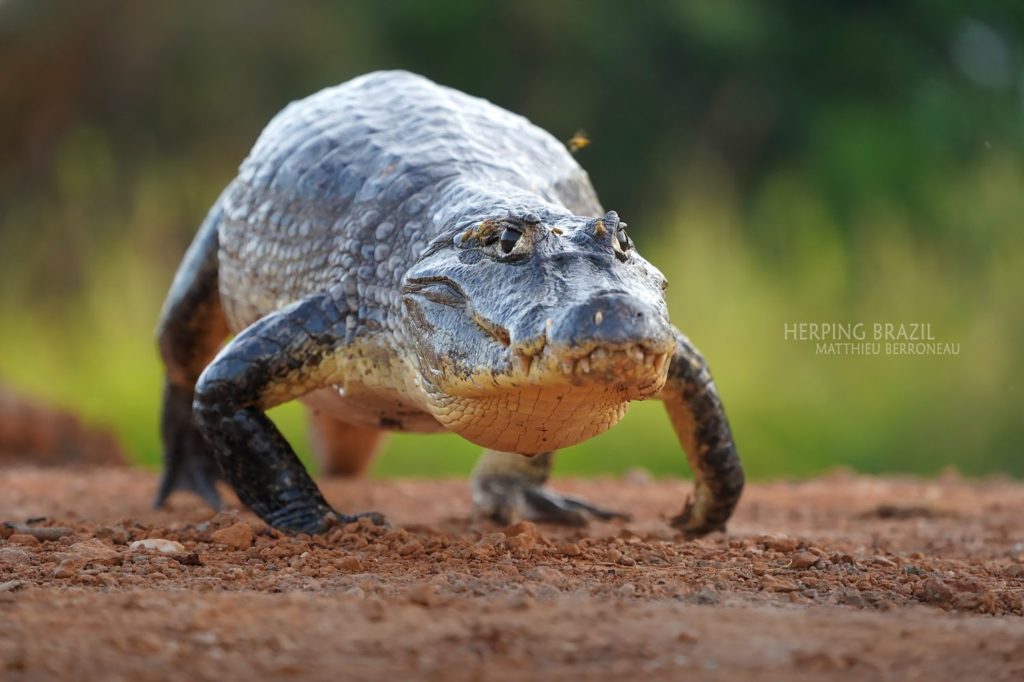
Caiman yacare
Le Pantanal est la plus grande étendue marécageuse au monde. La biodiversité y est exceptionnelle : Amphibiens, Reptiles, Oiseaux, Mammifères, etc. Et les espèces mythiques sont légion : Jaguar, Grand fourmilier, Tapir, Caïman, Anaconda…
L’expédition s’est déroulée sur 10 jours, sur 3 sites différents : deux au cœur des marais du Pantanal, un à Chapada dos Guimaraes, un secteur présentant un mélange de savanes et de forêts galeries à composante amazonienne.
The Pantanal is the largest swampy area in the world. The biodiversity is simply amazing: Amphibians, Reptiles, Birds, Mammals, etc. And the mythical species are numerous: Jaguar, Anteater, Tapir, Caiman, Anaconda…
The expedition took place over 10 days, on 3 different sites: two in the heart of the Pantanal marshes, one at Chapada dos Guimaraes, a site featuring a mixture of savannas and Amazonian gallery forests.
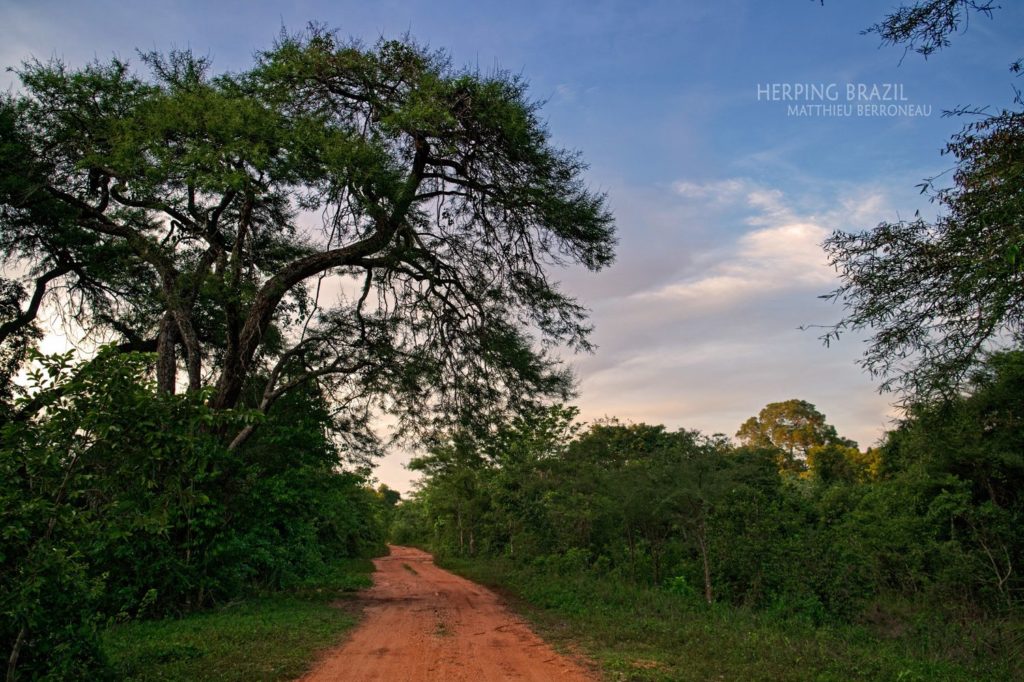
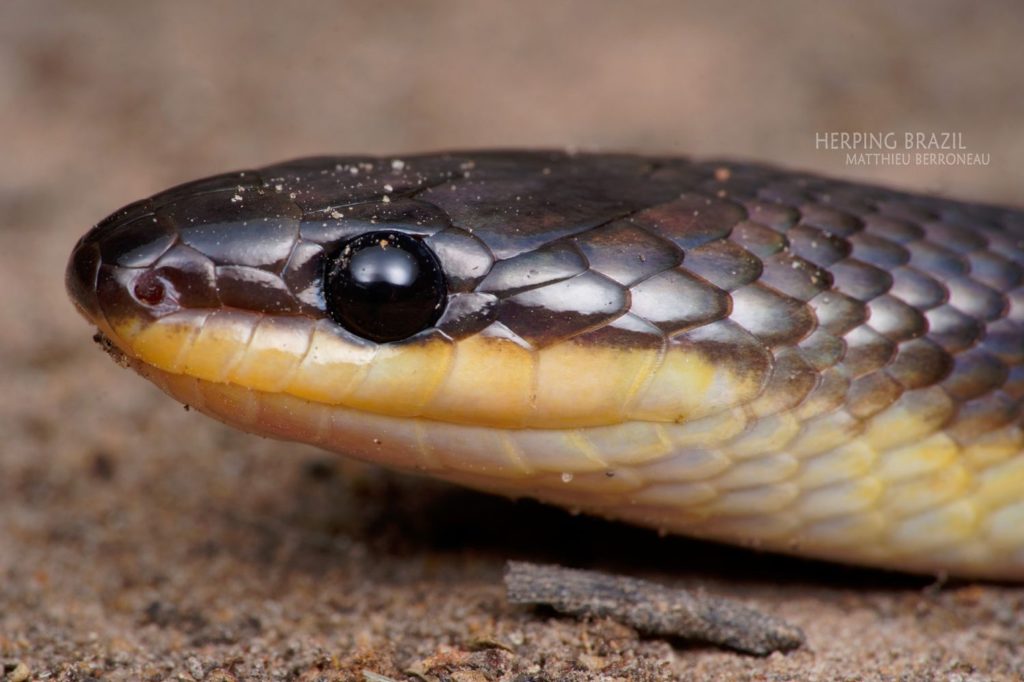
Mussurana bicolor
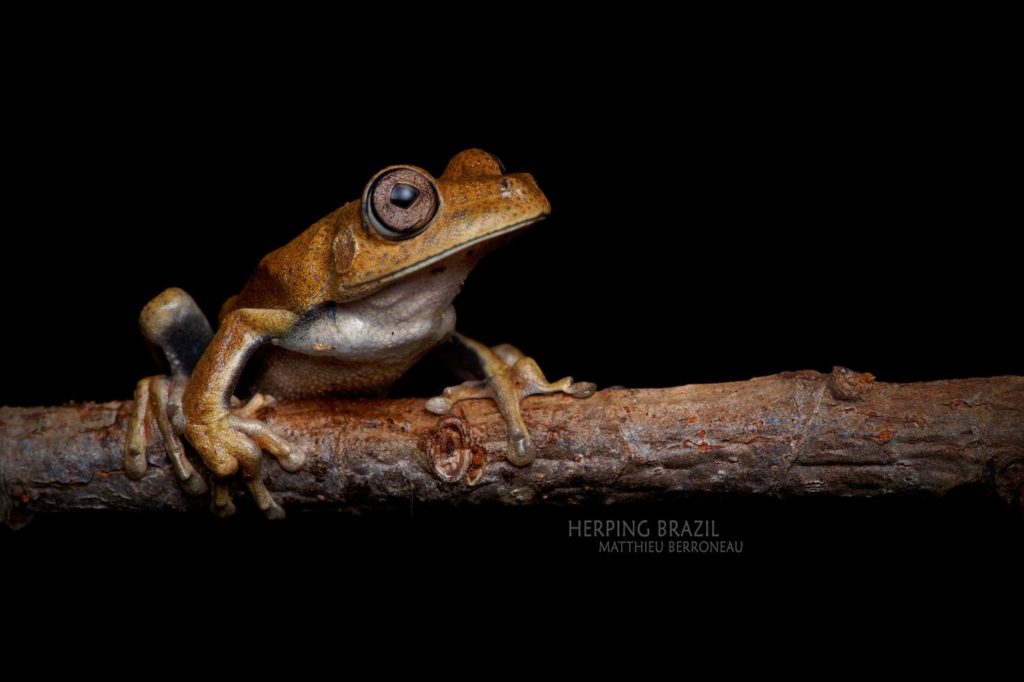
Dendropsophus melanargyreus
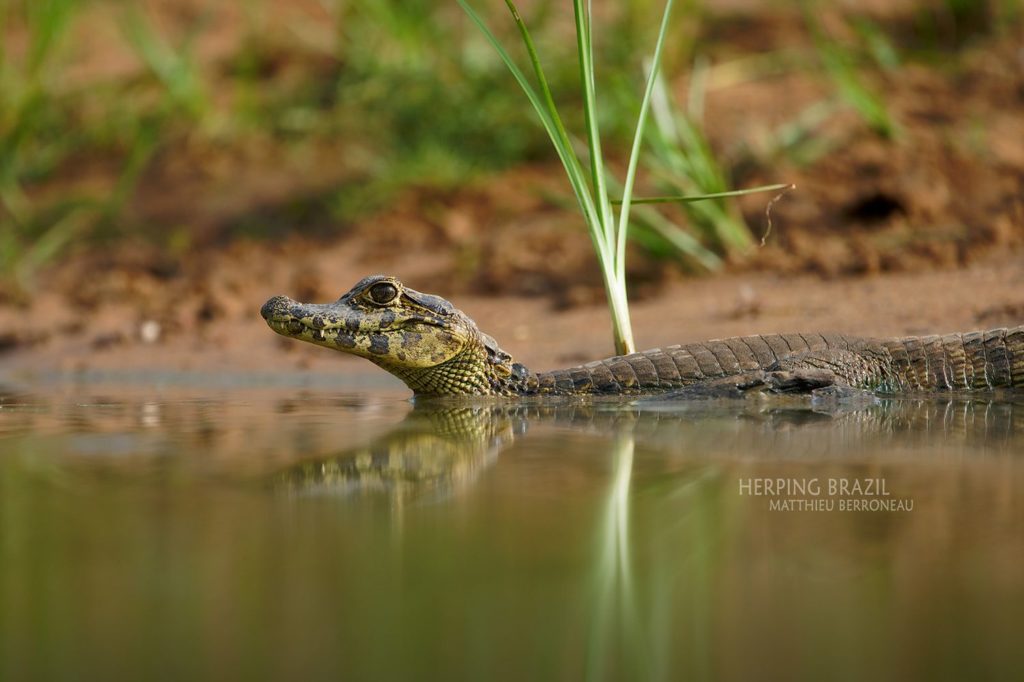
Caiman yacare
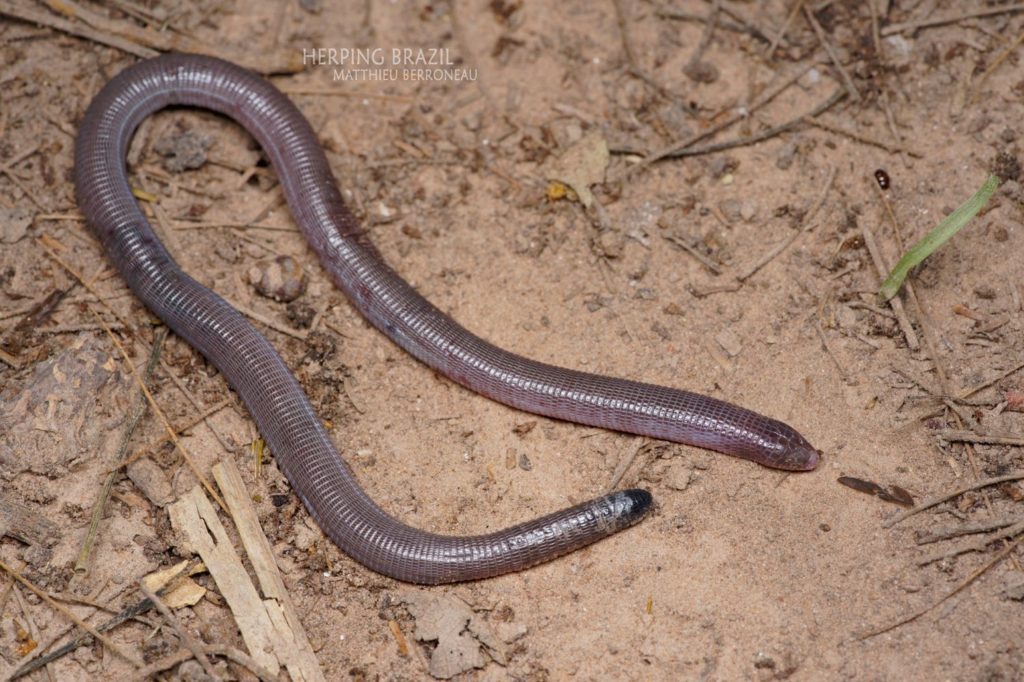
Amphisbaena vermicularis
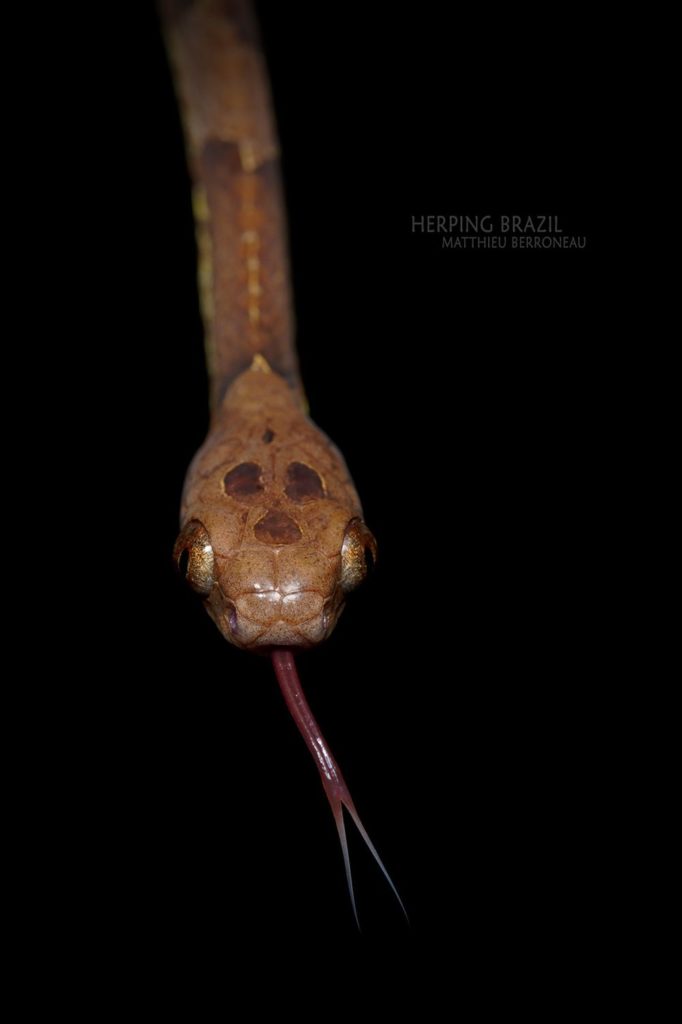
Dipsas cisticeps
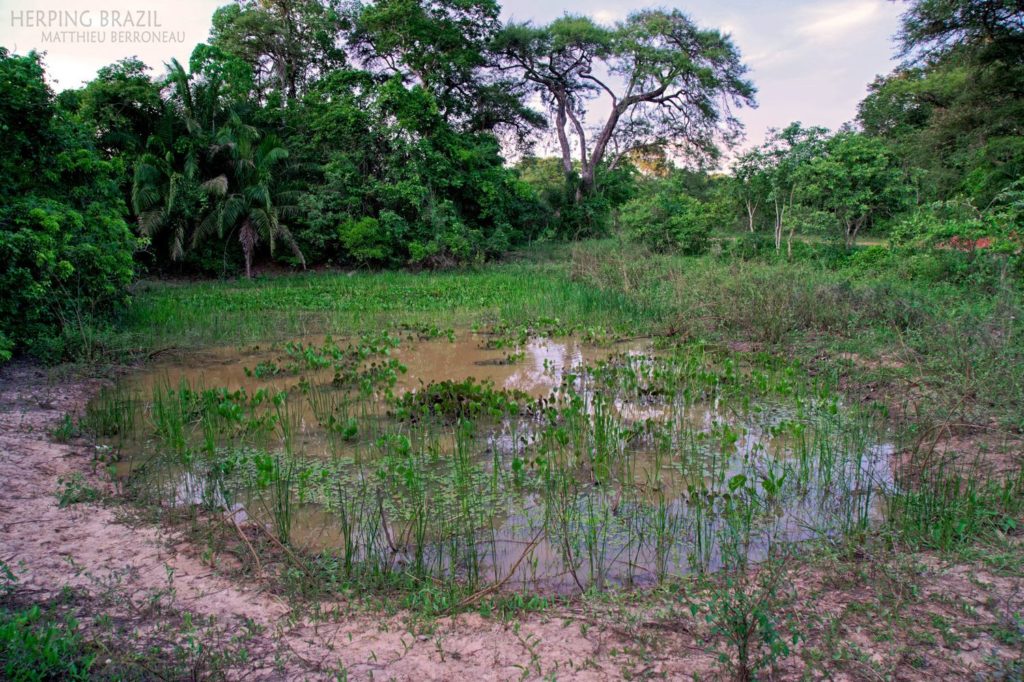
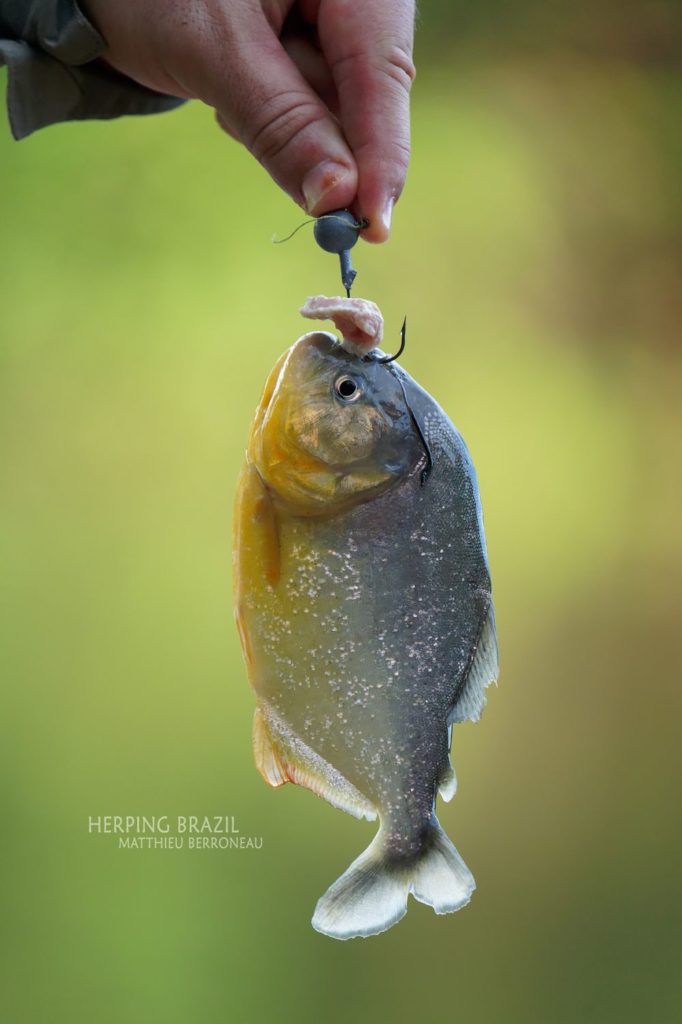
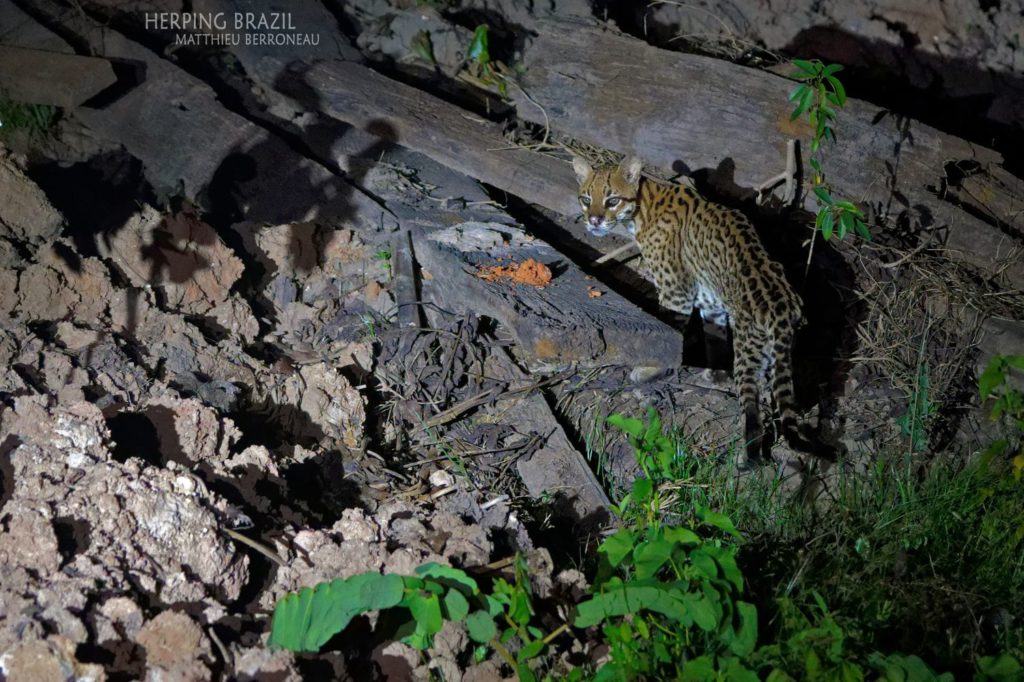
Ocelot Leopardus pardalis !
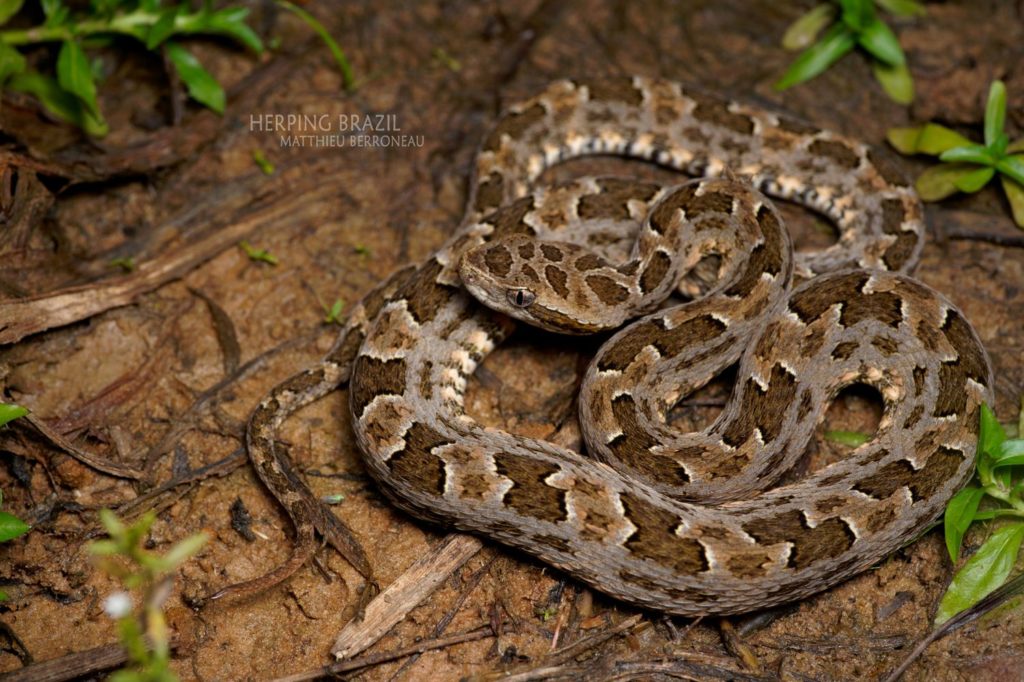
Bothrops matogrossensis
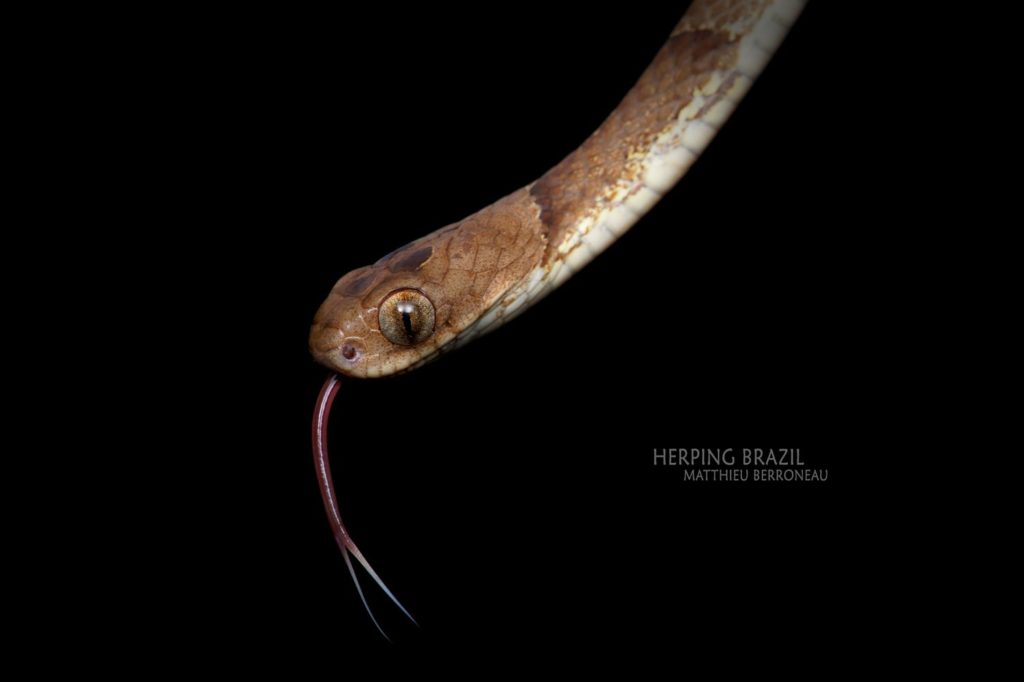
Dipsas cisticeps
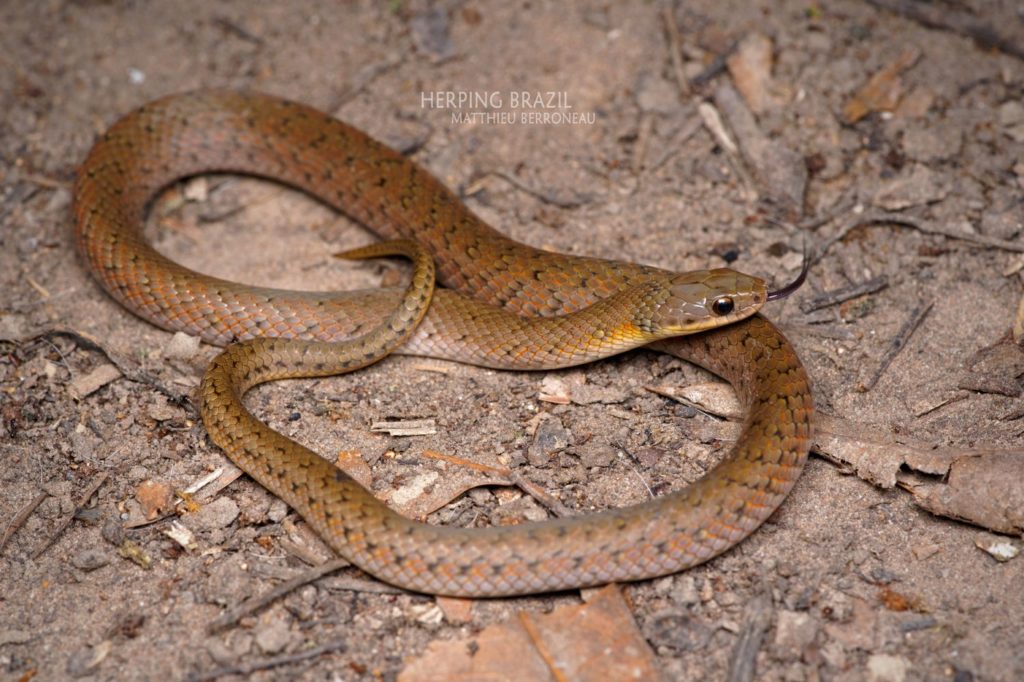
Erythrolamprus poecilogyrus
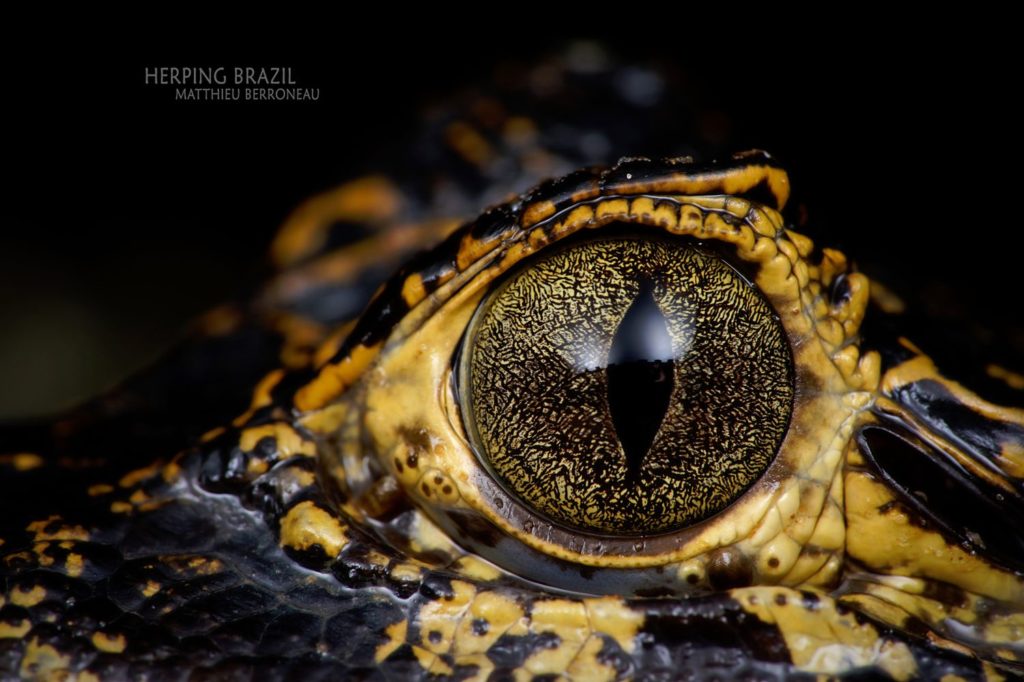
Caiman yacare
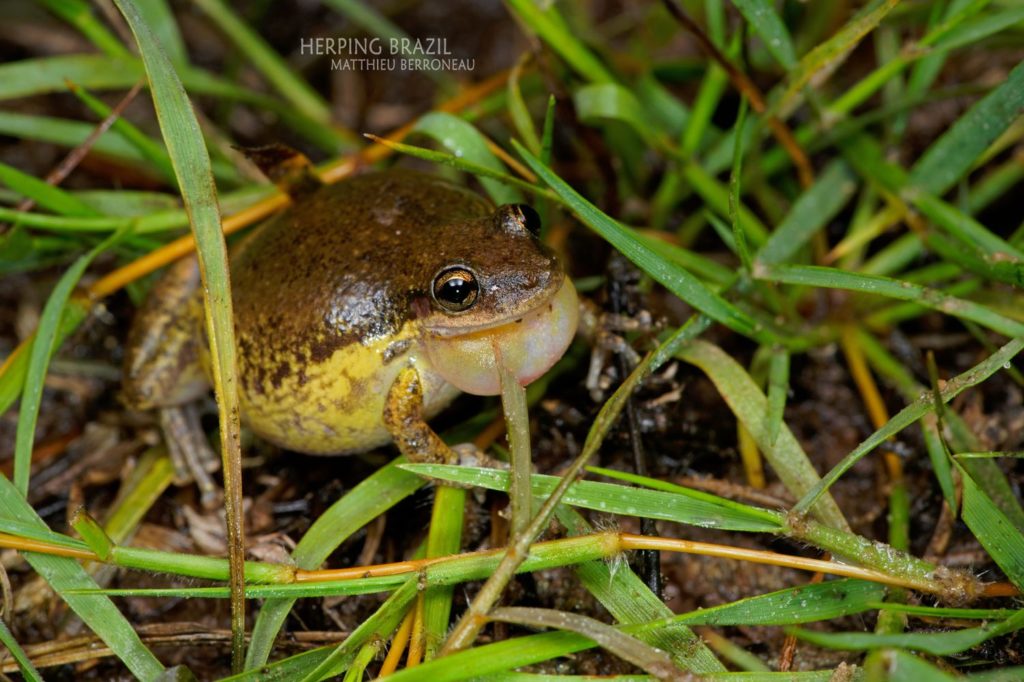
Scinax nasicus
Le séjour a répondu aux attentes des participants et les découvertes se sont succédé sans relâche : Caïman yacare (comment les manquer ? La densité est tout bonnement extraordinaire !), Anaconda jaune (deux !), nombreuses espèces d’Amphibiens (Pithecopus azureus !), et surtout, les deux espèces de Bothrops du Pantanal : Bothrops matogrossensis et Bothrops moojeni.
Les observations de mammifères qui ont accompagné nos sorties herpétos ont été tout aussi incroyables : pas moins de 8 tapirs ont été observées, parfois extrêmement proches, deux ocelots, un fourmilier géant, plusieurs petits fourmiliers, un tatou à 9 bandes, de nombreux agoutis, coatis, ratons crabiers, capybaras, renards des savanes… Au final, il n’aura manqué que le Jaguar, trahi par ses traces le temps d’une soirée.
Result of the trip is just crazy: Caiman yacare (how to miss them? The density is simply extraordinary!), Yellow Anaconda (two!), numerous species of Amphibians (Pithecopus azureus!) , and above all, the two Pit-vipers of the Pantanal: Bothrops matogrossensis and Bothrops moojeni.
In addition to our herpetological finds we observed countless mammals: no less than 8 tapirs, sometimes extremely close, two ocelots, a giant anteater, several small anteaters, a 9-banded armadillo, lot of agoutis, coatis, crab-eating raccoons, capybaras, crab-eating foxes … In the end, all that was missing was the Jaguar, betrayed by its tracks on our last night in the Pantanal.
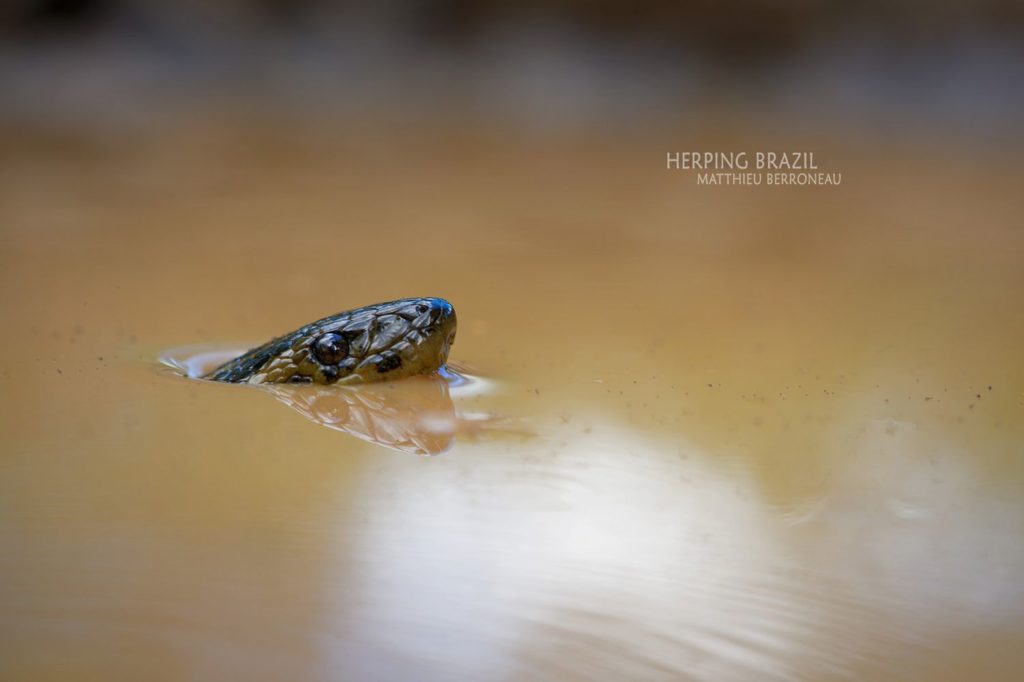
Anaconda Eunectes notaeus
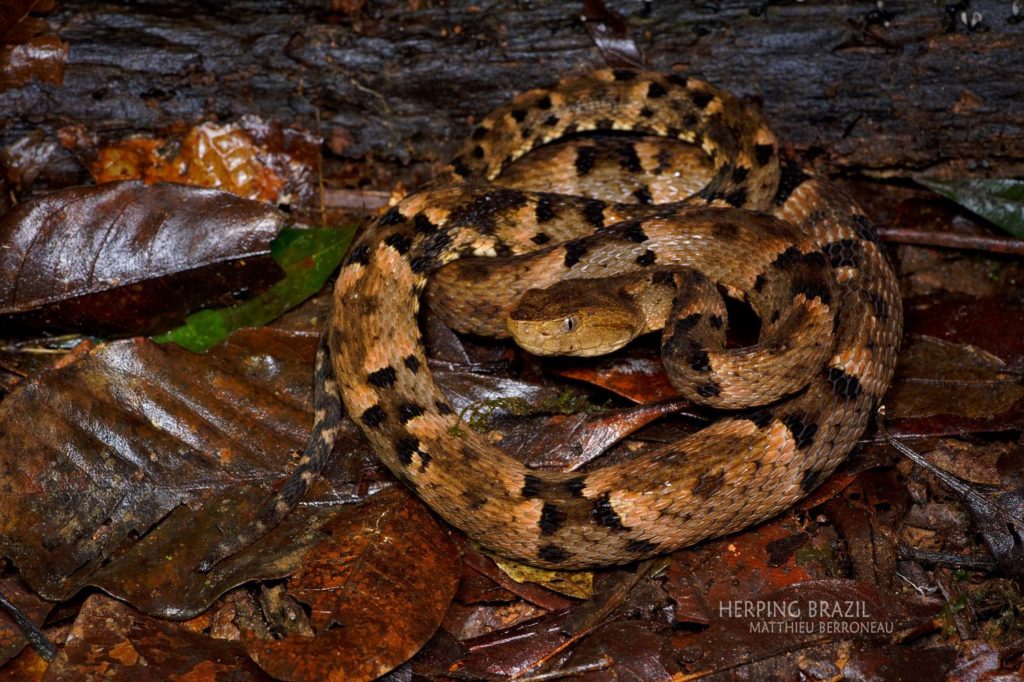
Bothrops moojeni
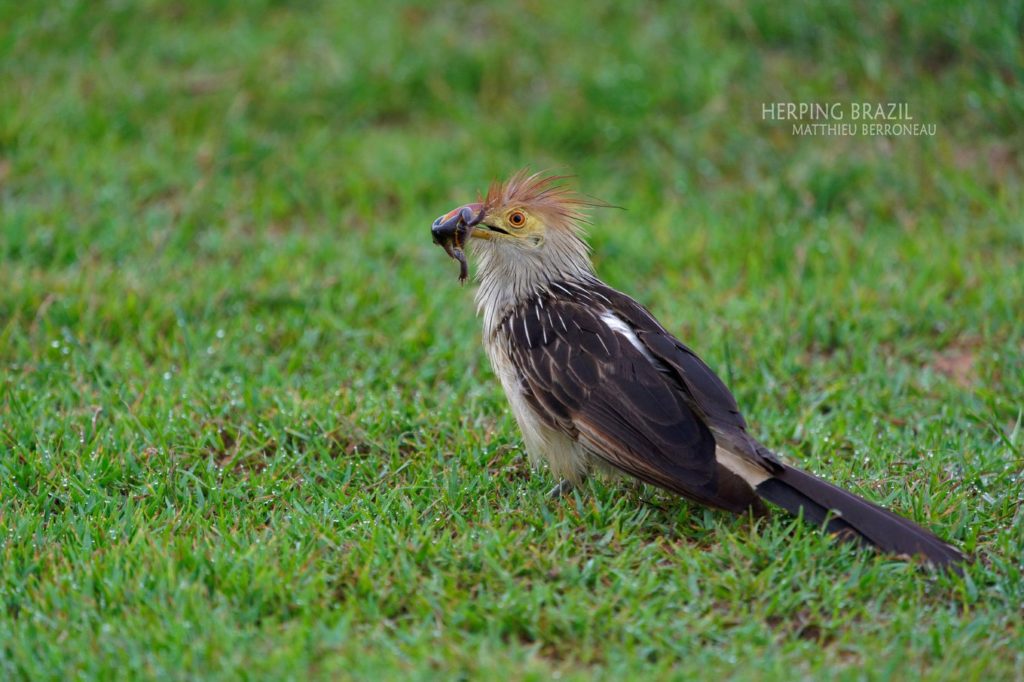
Guira cantara
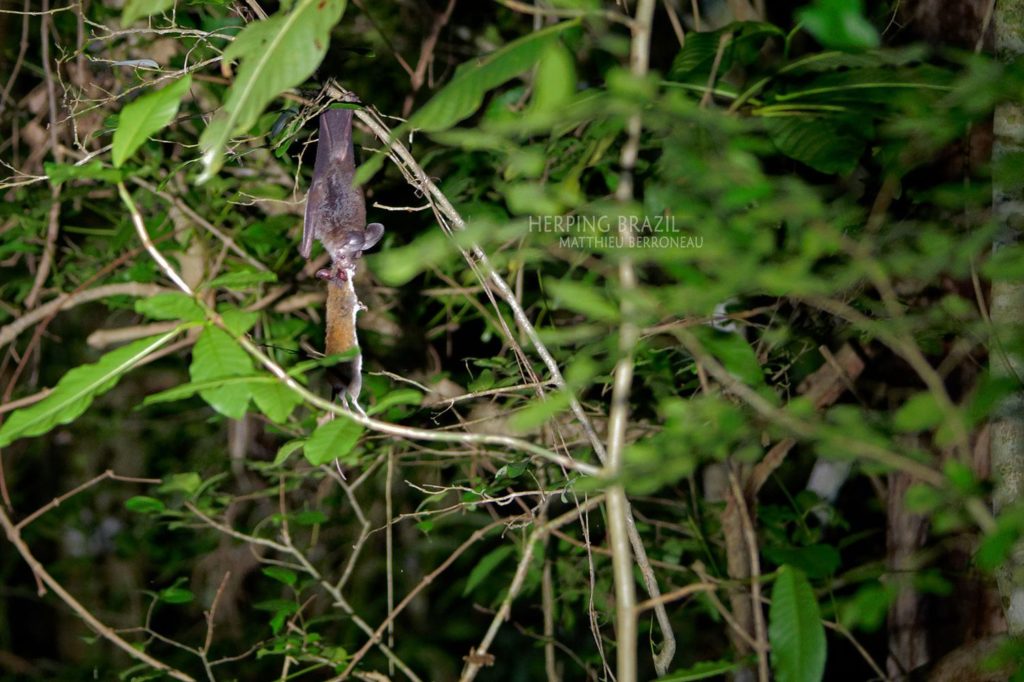
Chrotopterus auritus
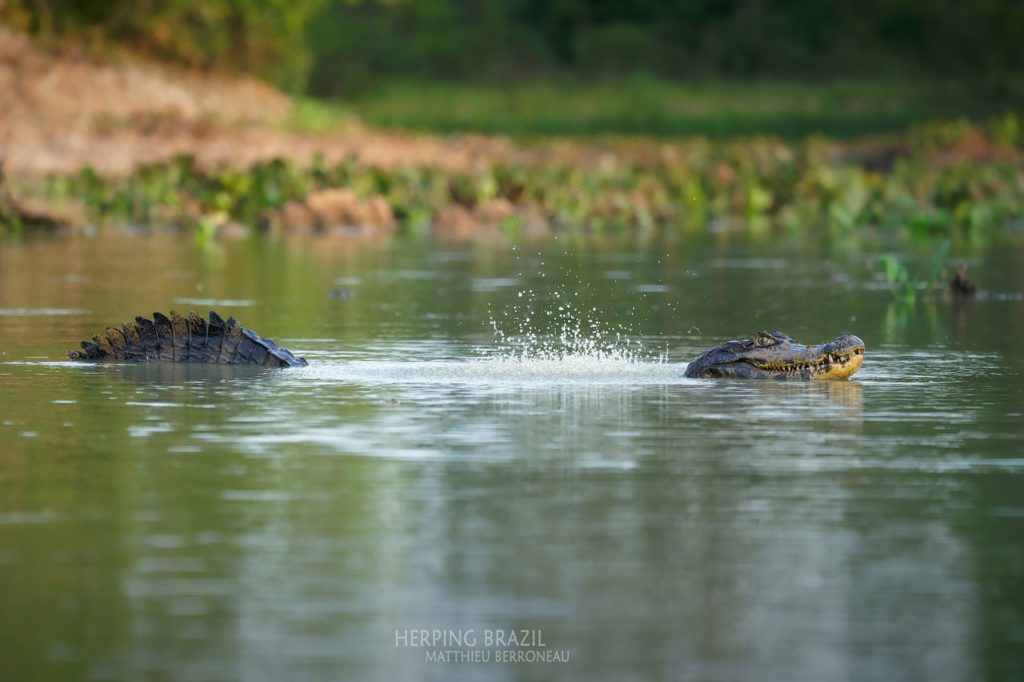
Caiman yacare
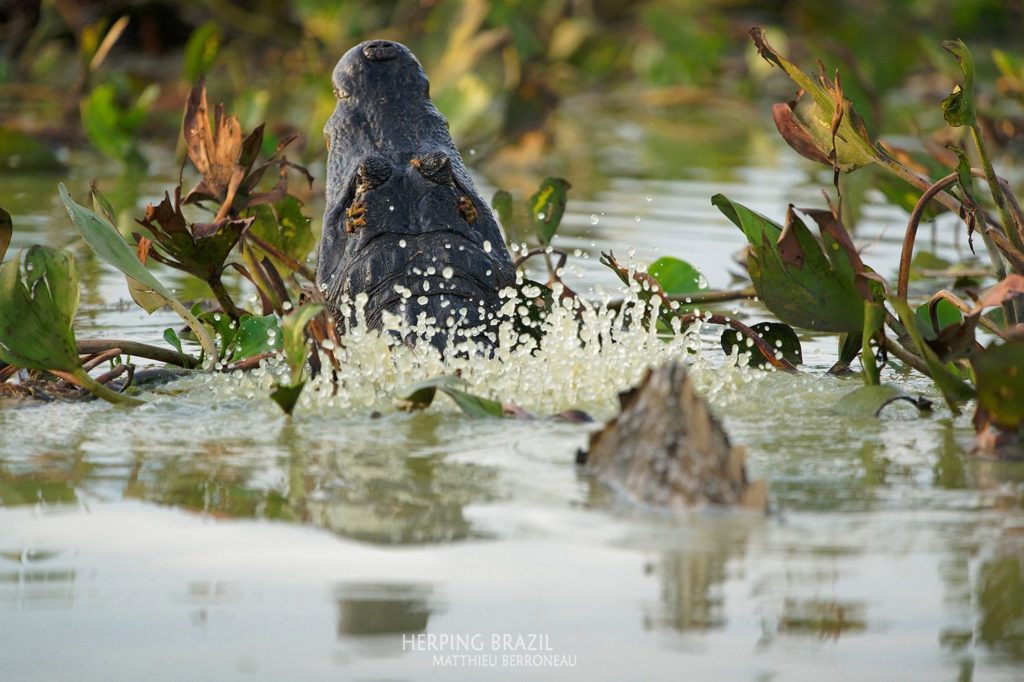
Caiman yacare
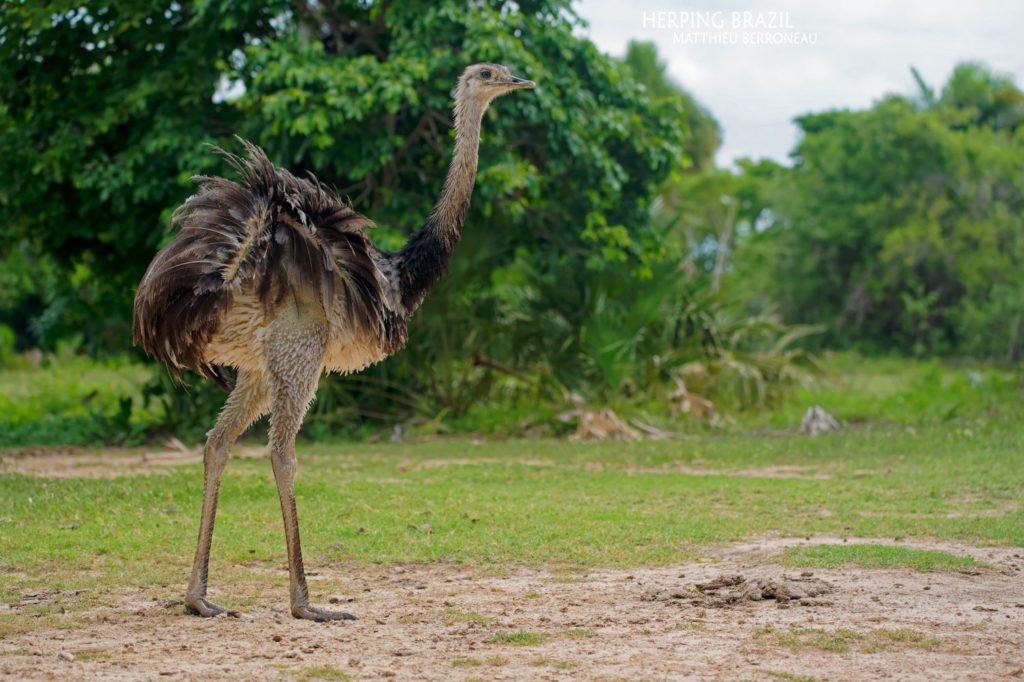
Rhea americana
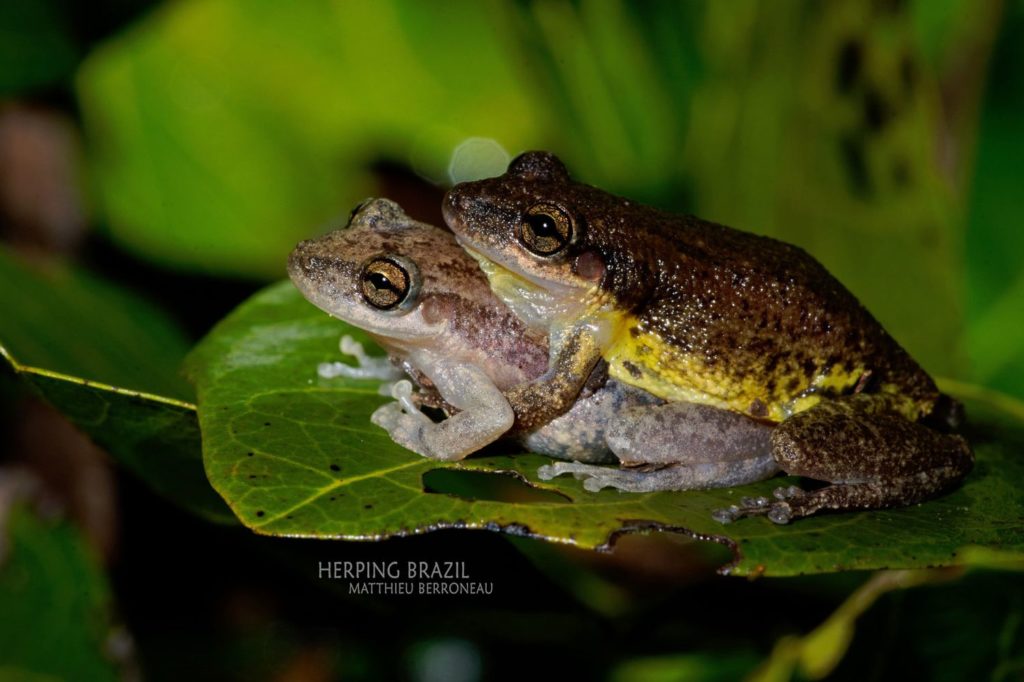
Scinax nasicus
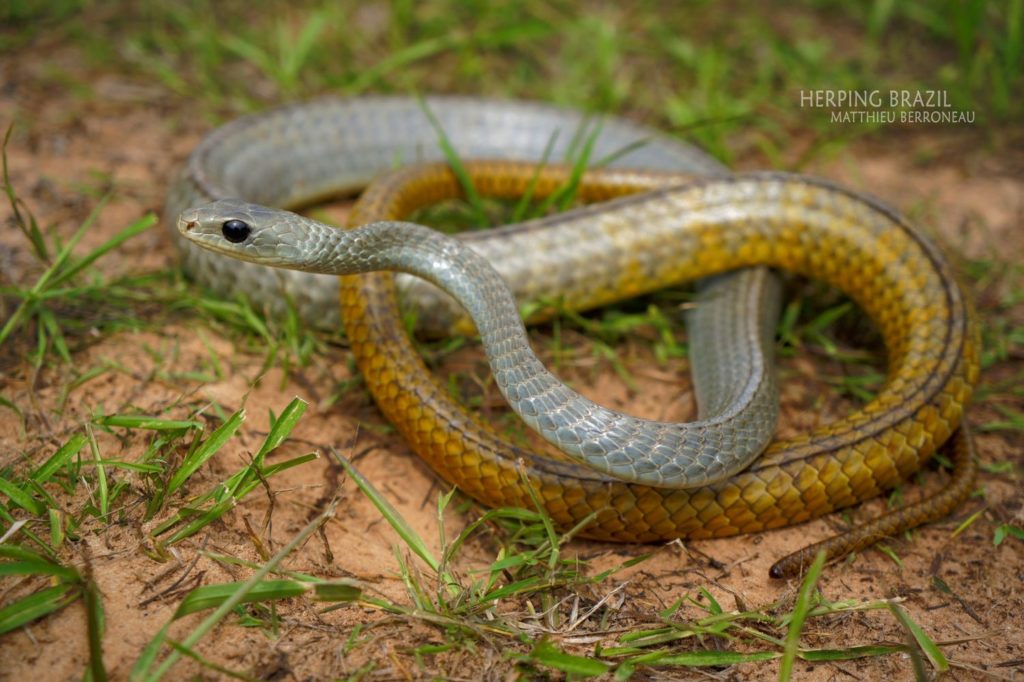
Chironius laurenti
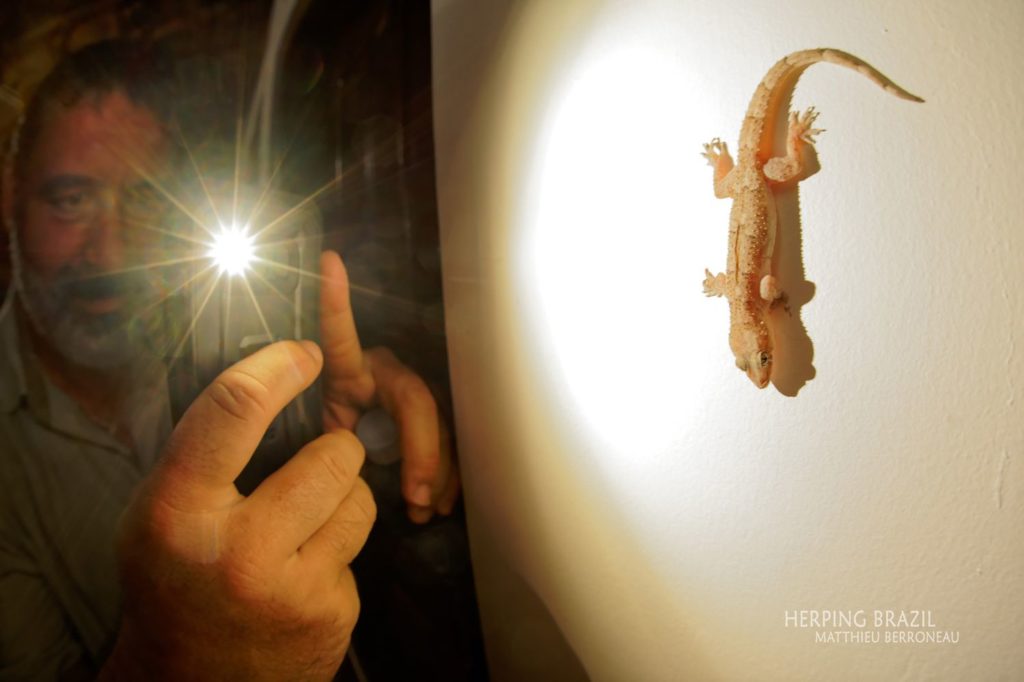
Hemidactylus mabouia
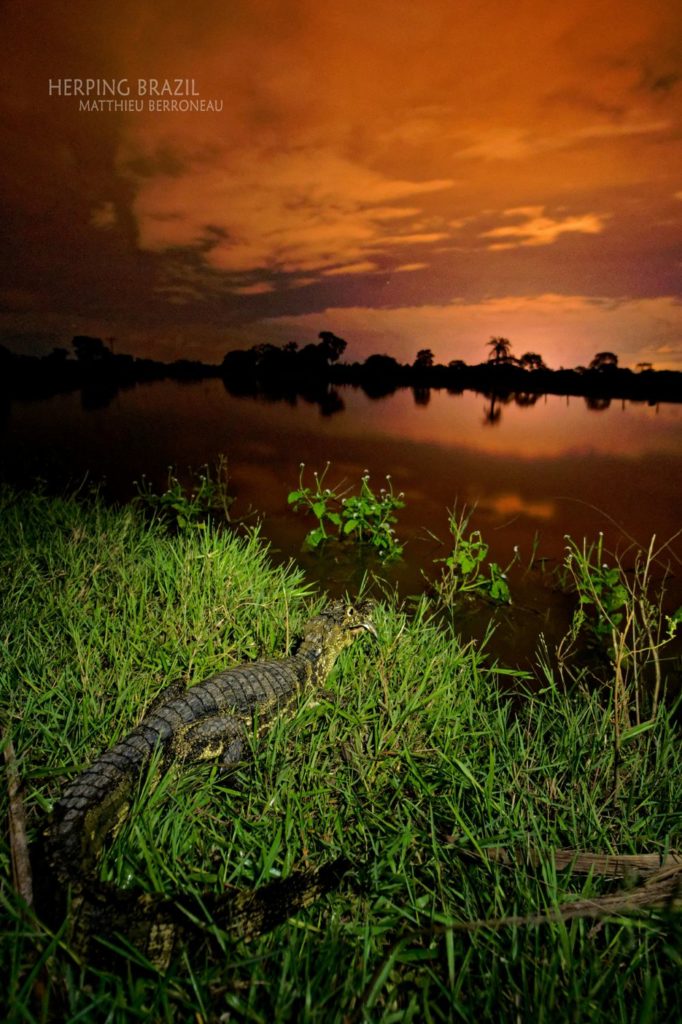
Caiman yacare
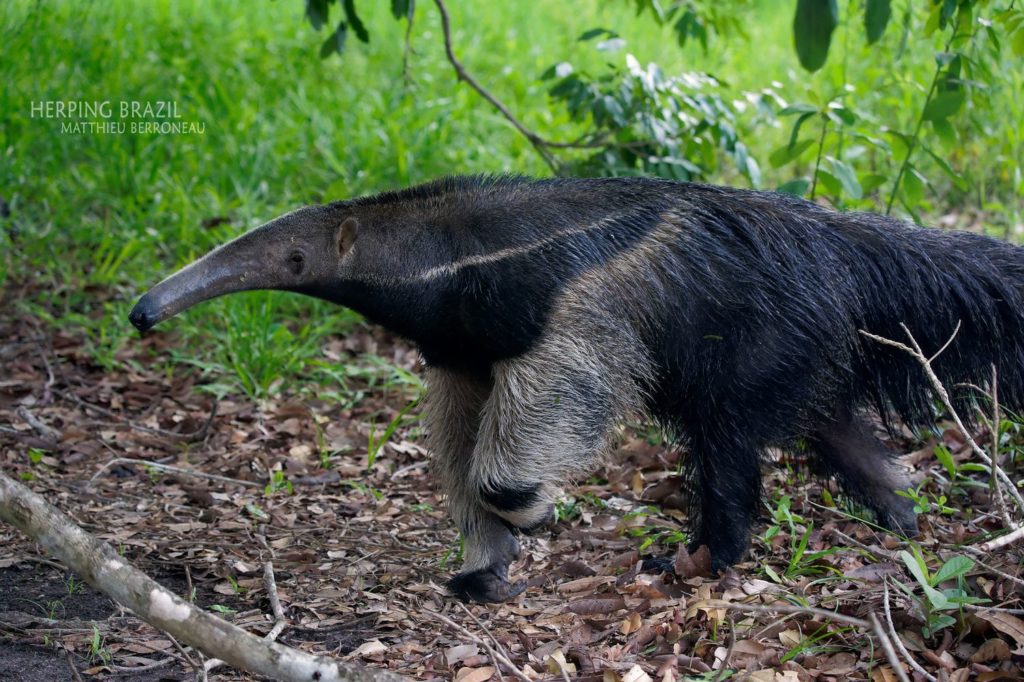
Myrmecophaga tridactyla
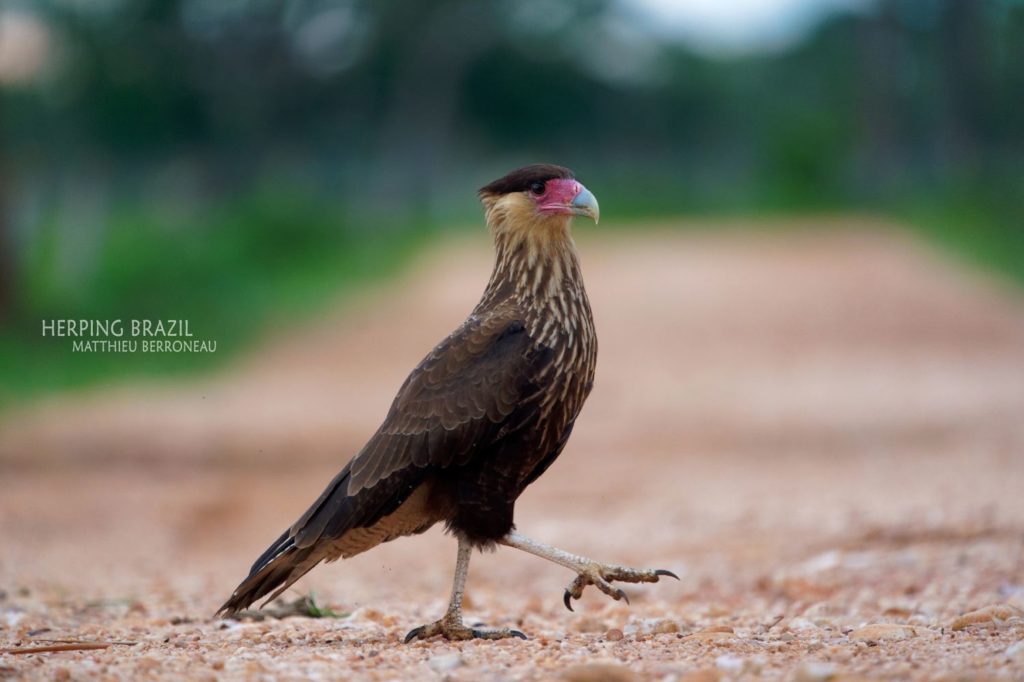
Caracara plancus
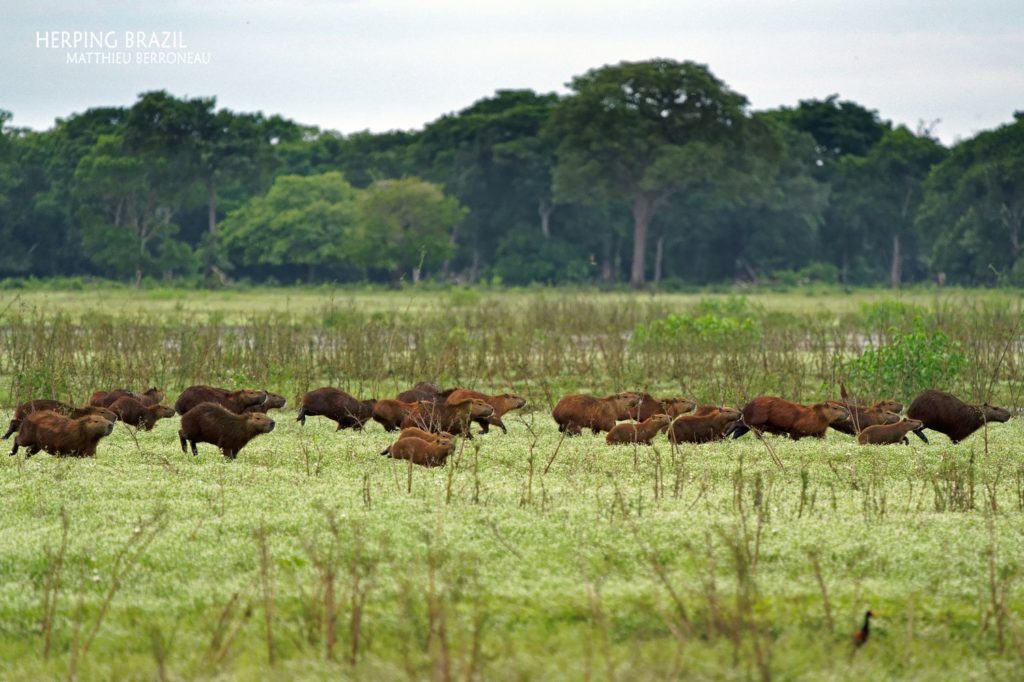
Hydrochoerus hydrochaeris
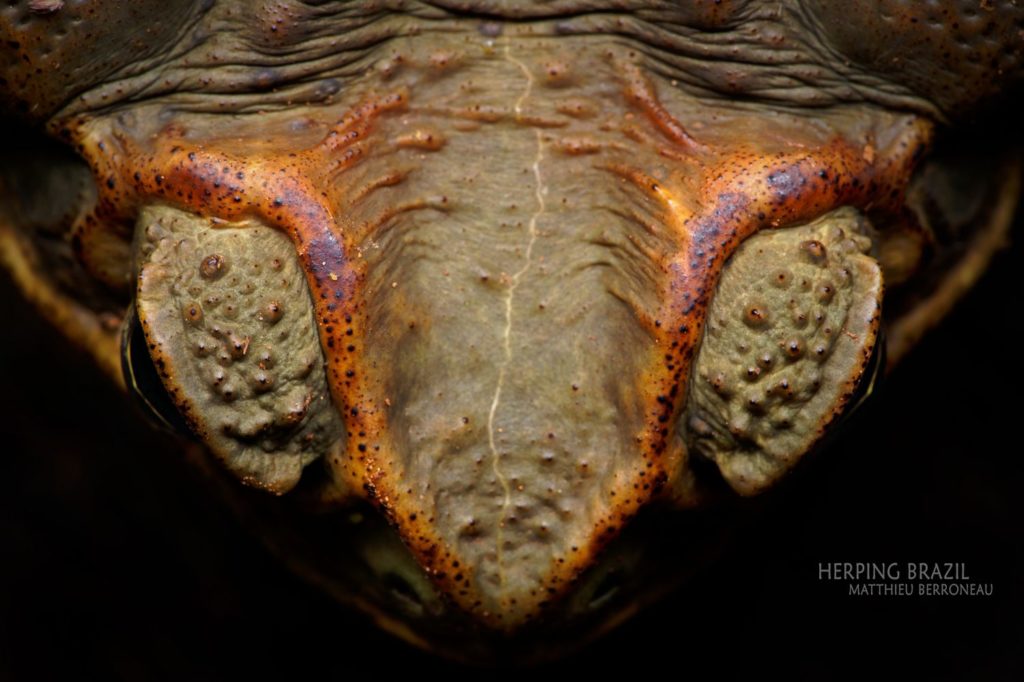
Rhinella schneideri
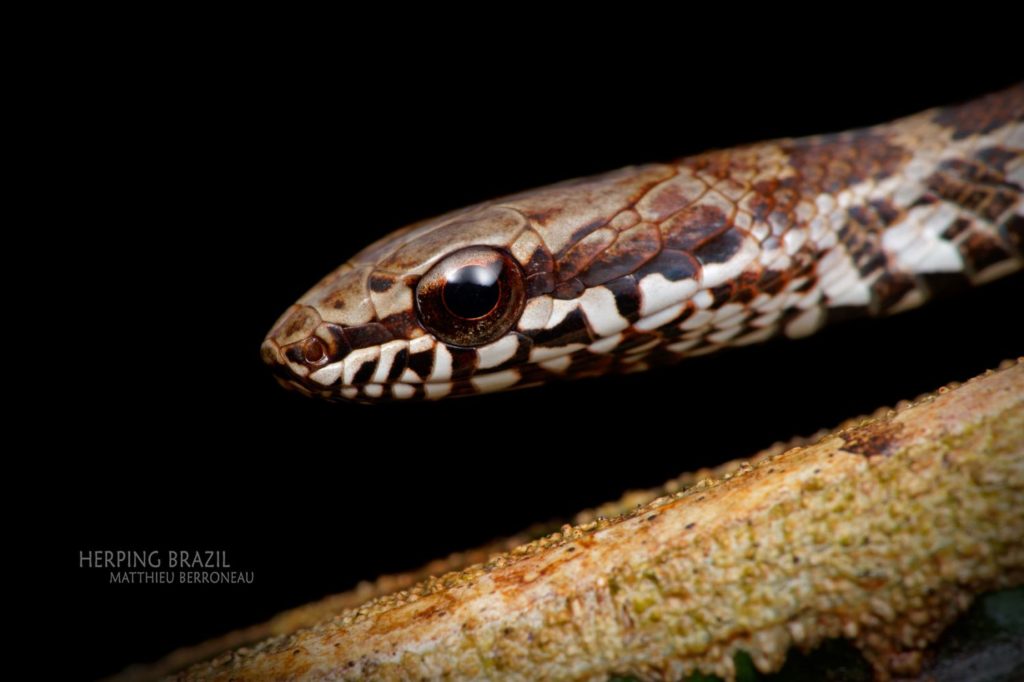
Mastigodryas boddaerti
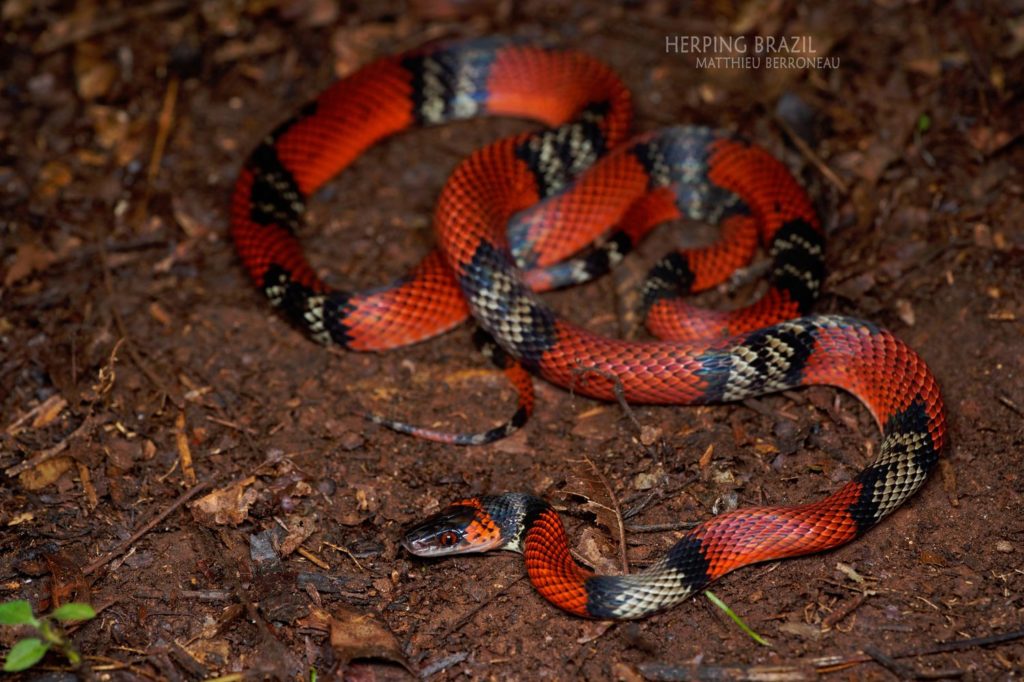
Oxyrhopus guibei
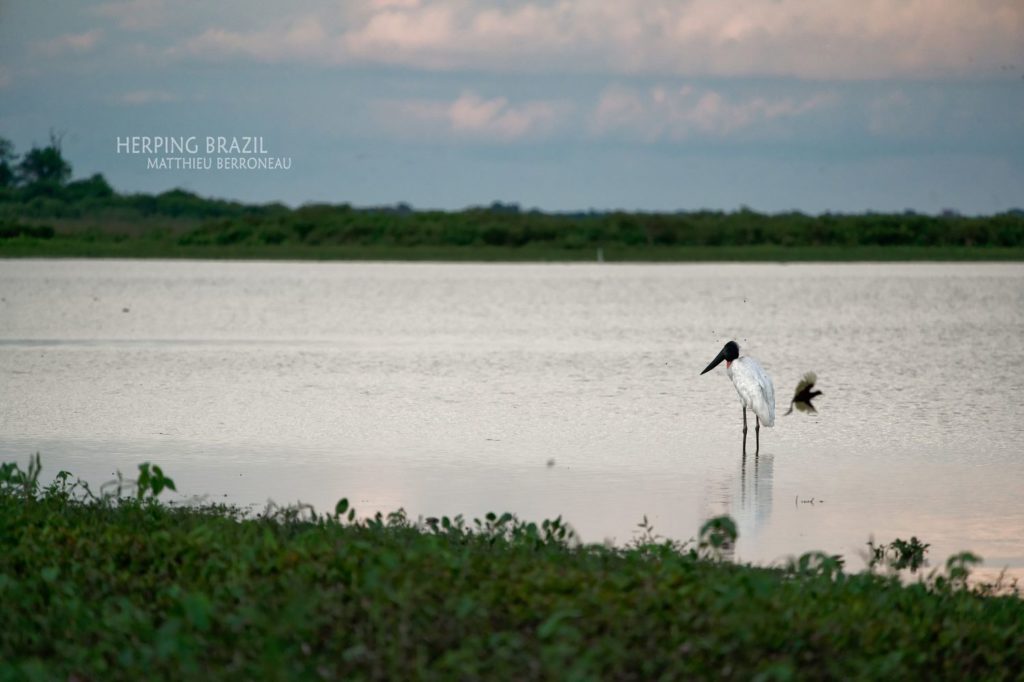
Jabiru mycteria
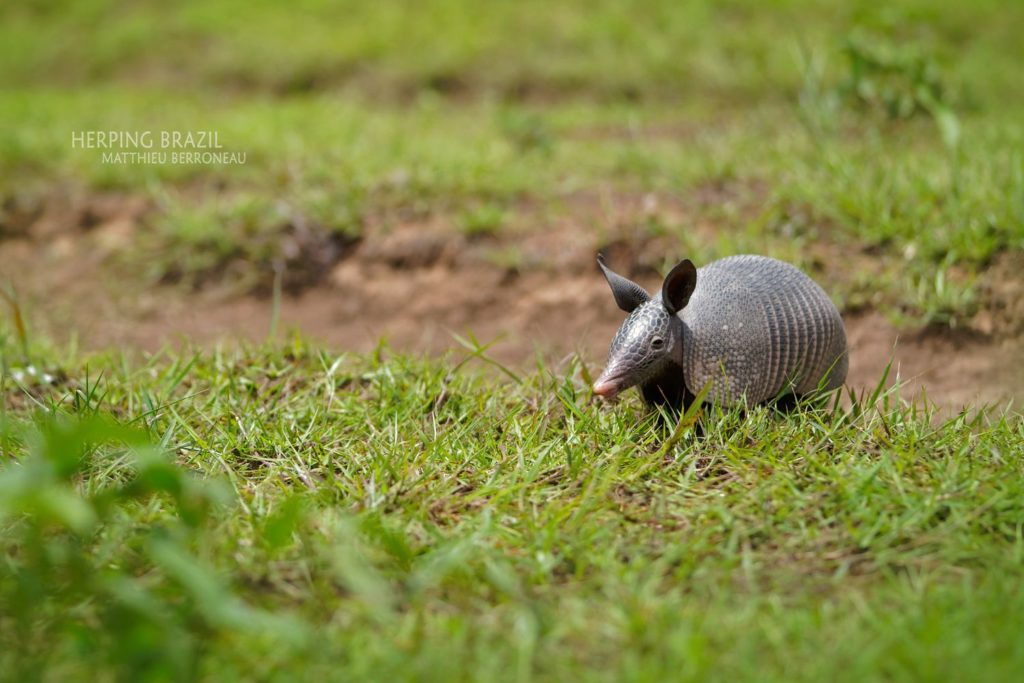
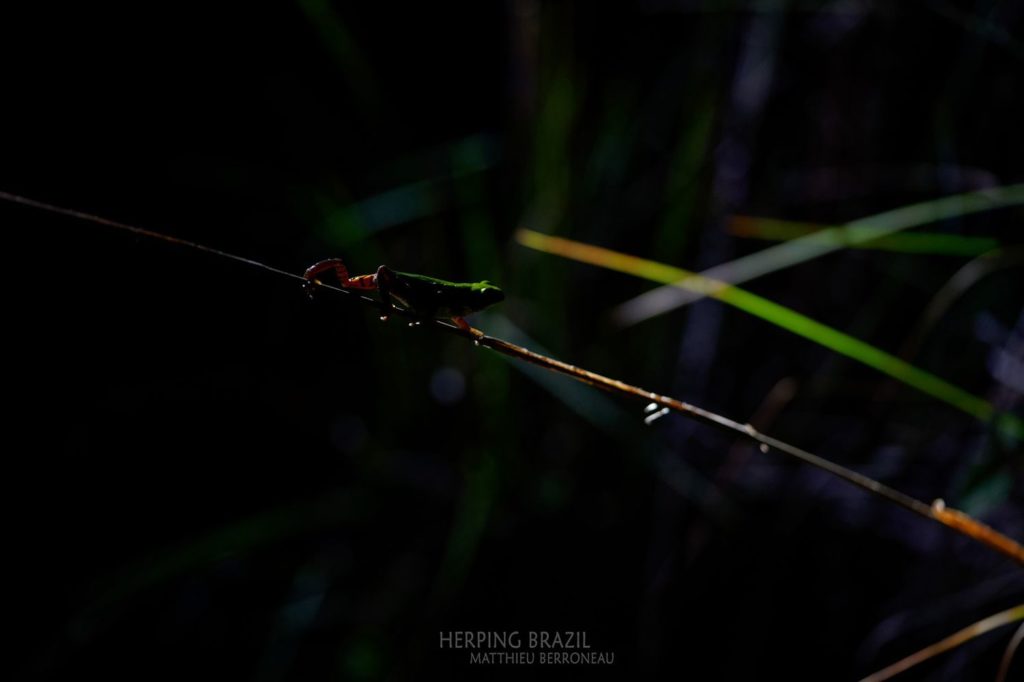
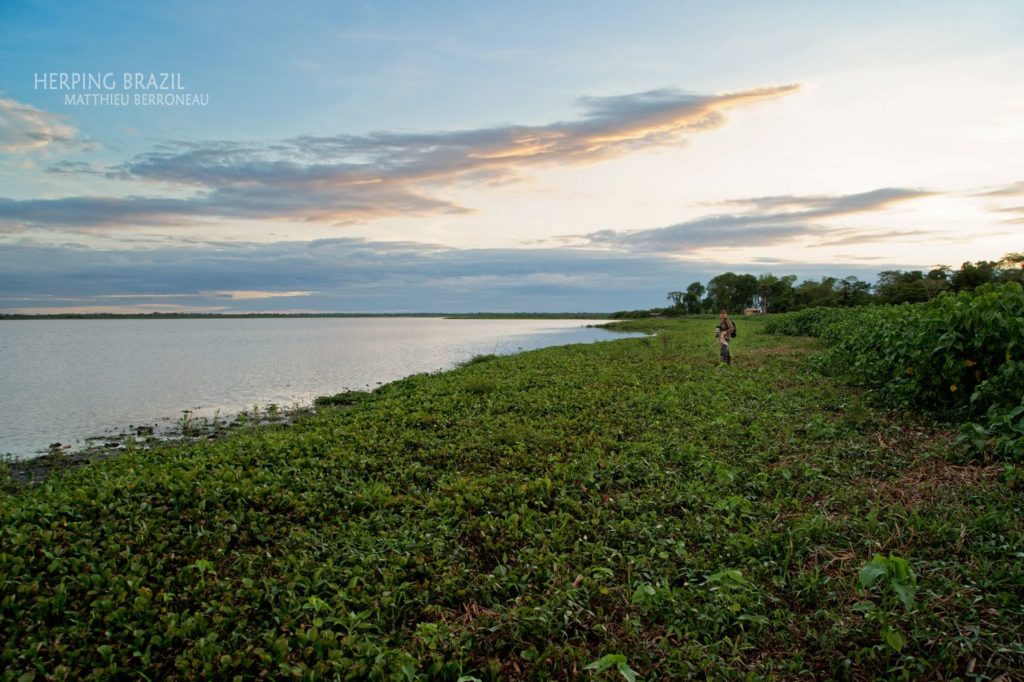
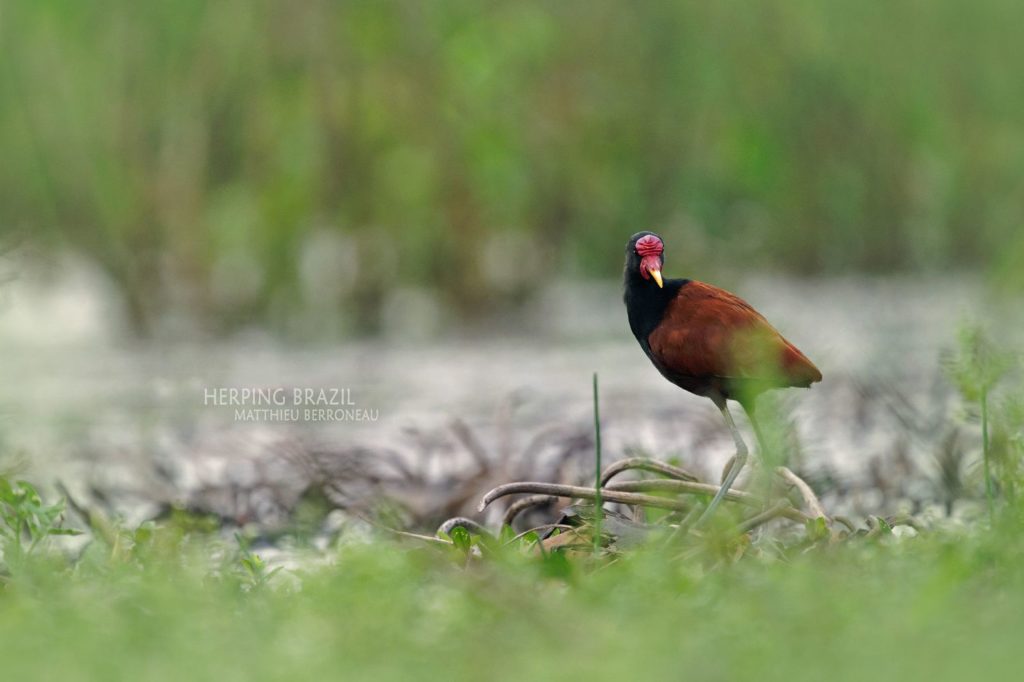
Jacana jacana
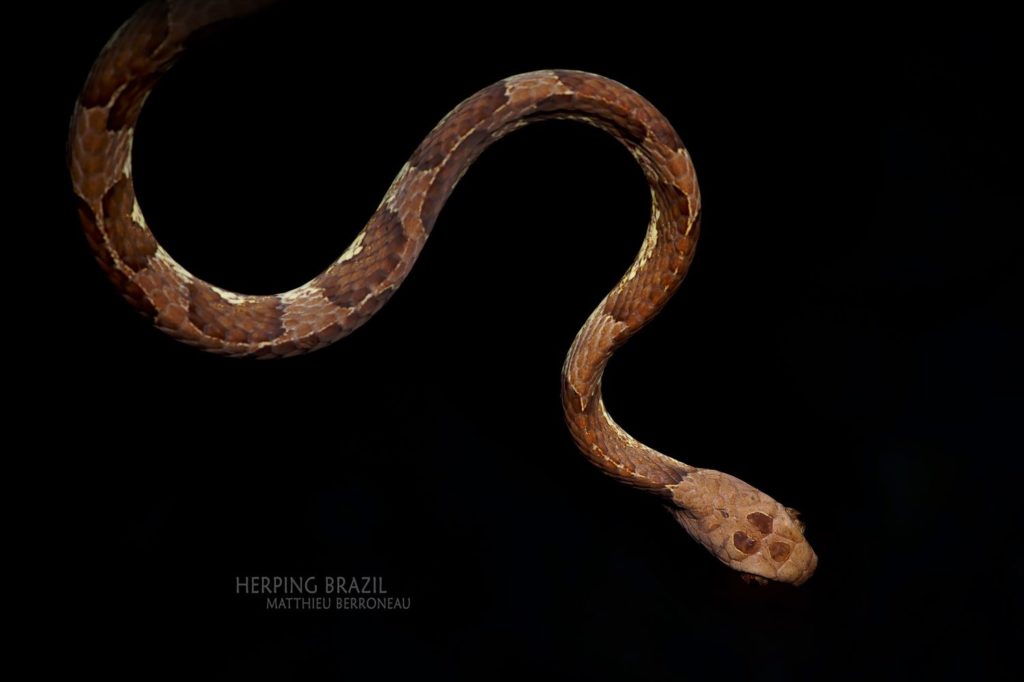
Dipsas cisticeps
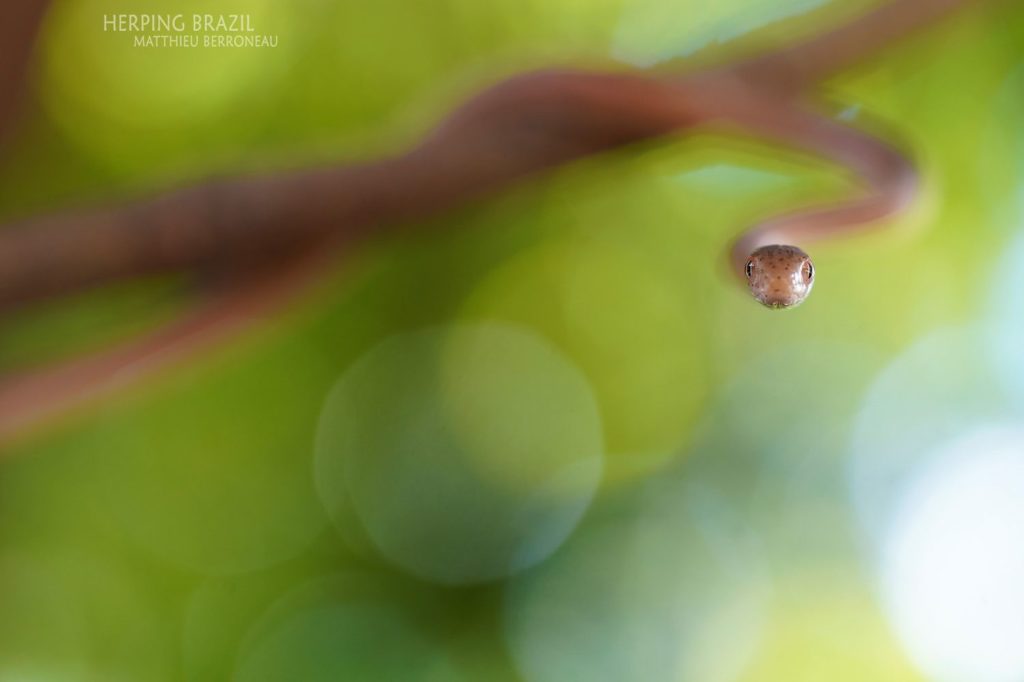
Thamnodynastes lanei
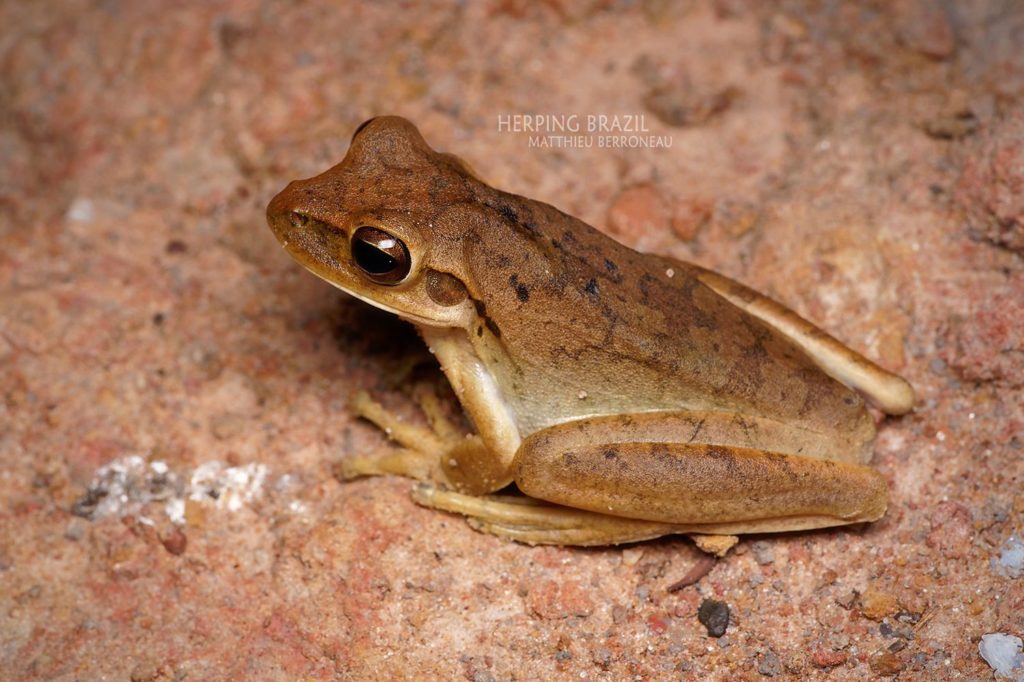
Hypsiboas raniceps
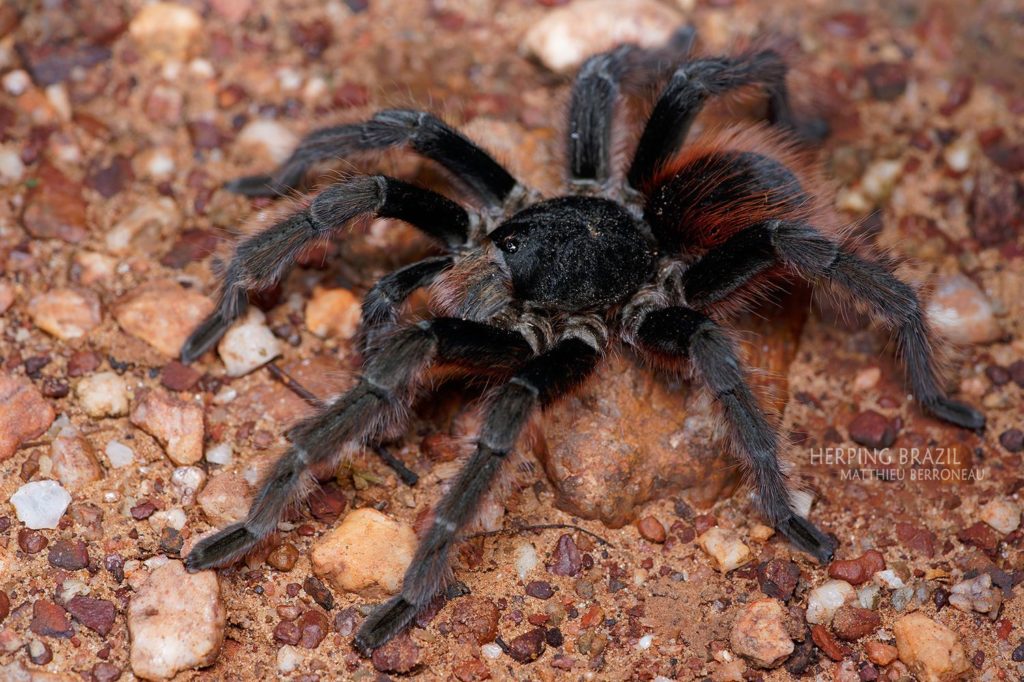
Acanthoscurria chacoana
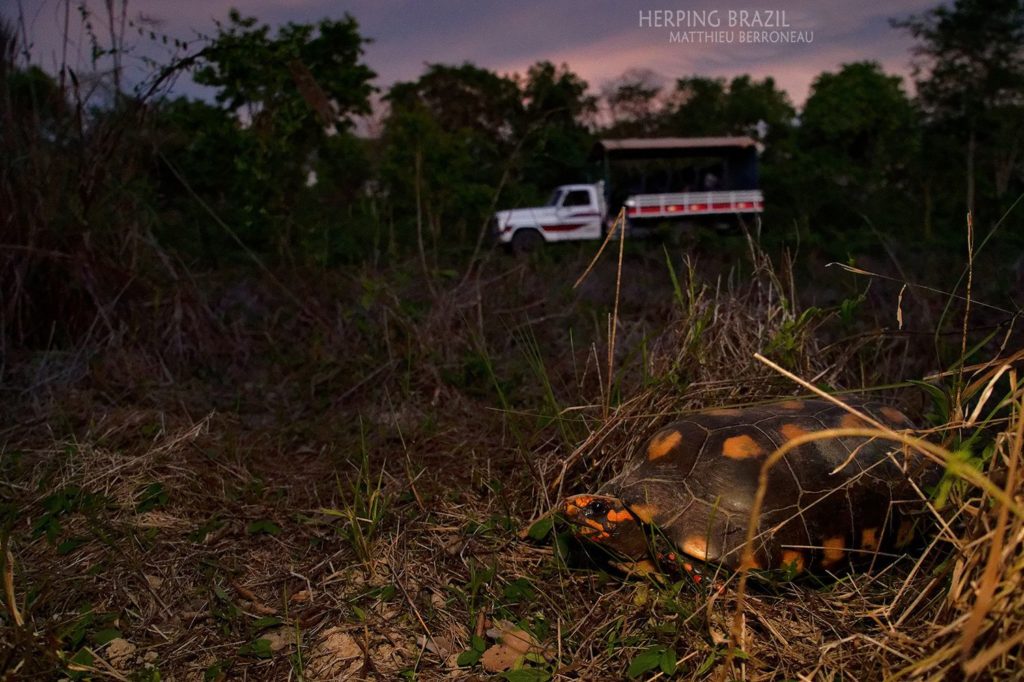
Chelonoidis carbonarius
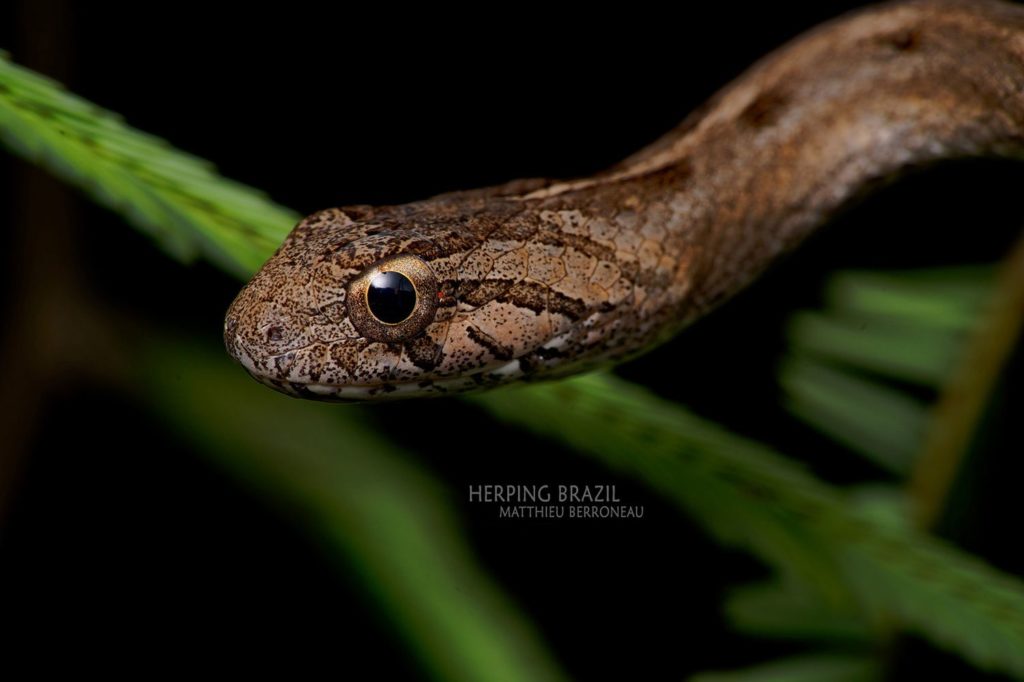
Thamnodynastes chaquensis
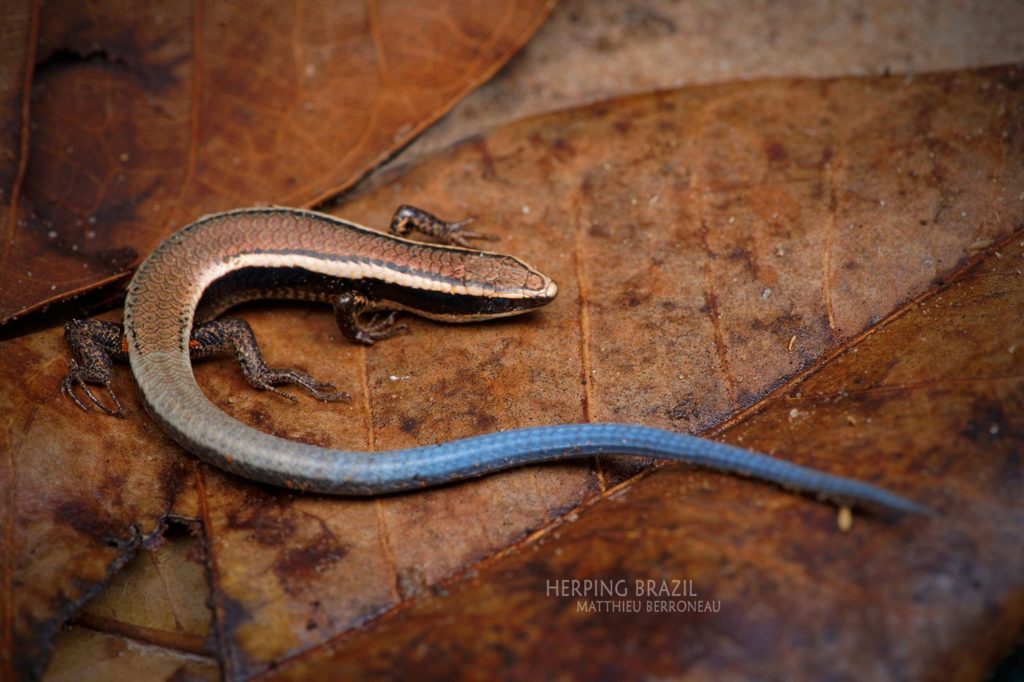
Micrablepharus maximilianus
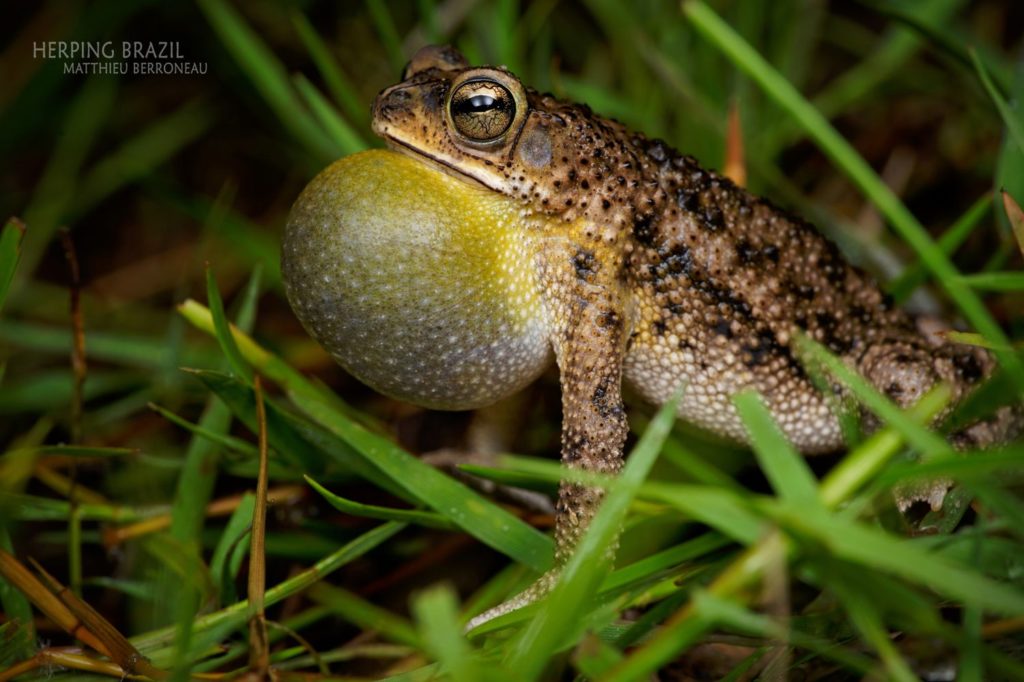
Rhinella granulosa
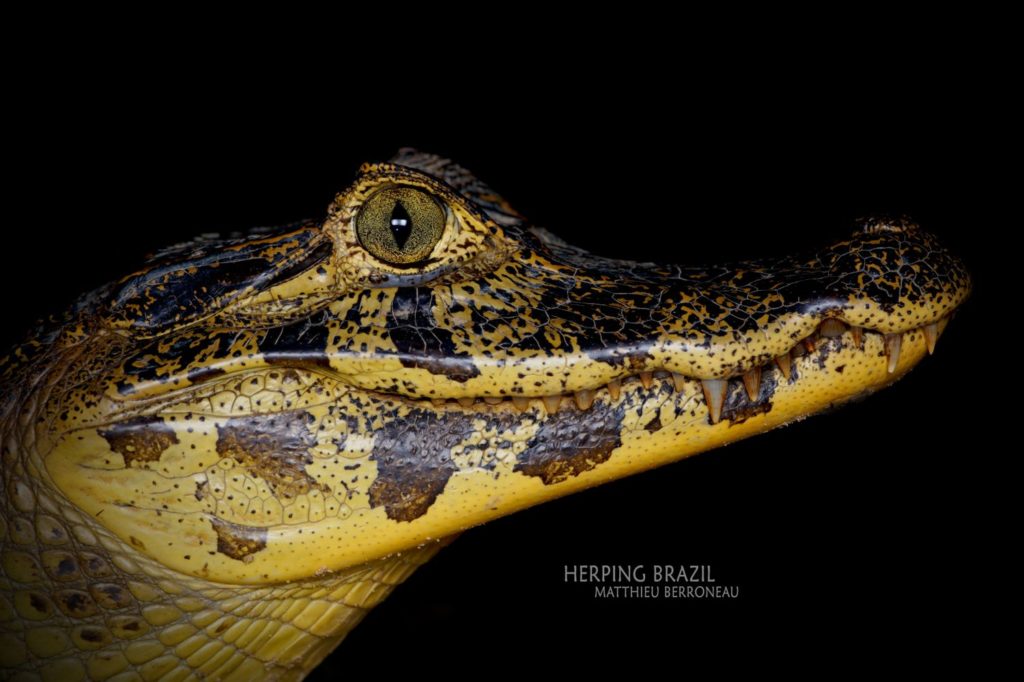
Caiman yacare
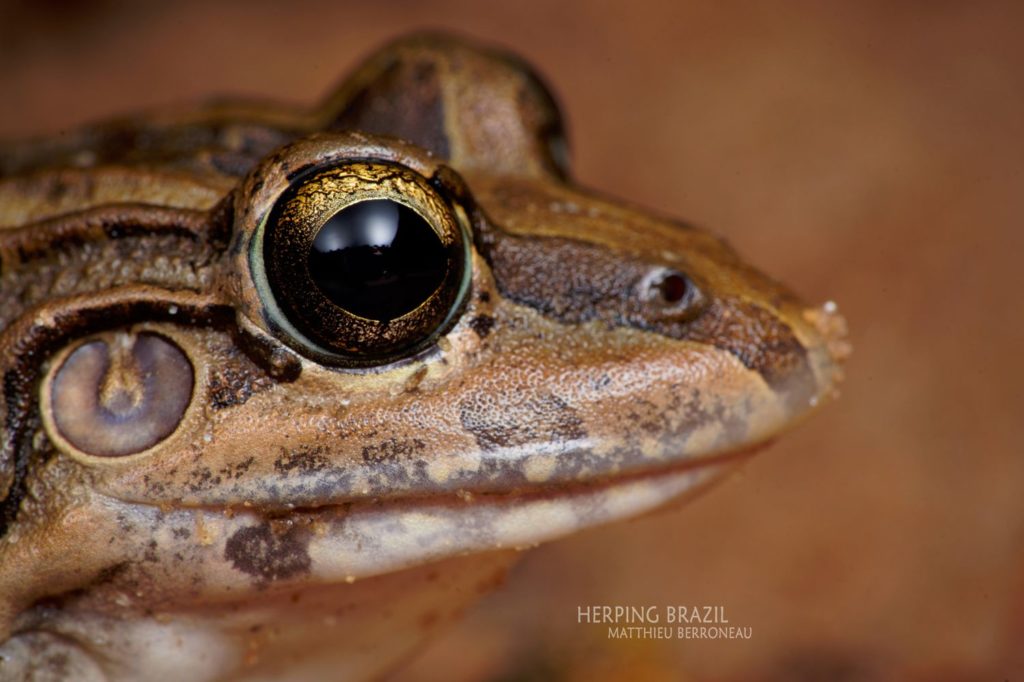
Leptodactylus chaquensis
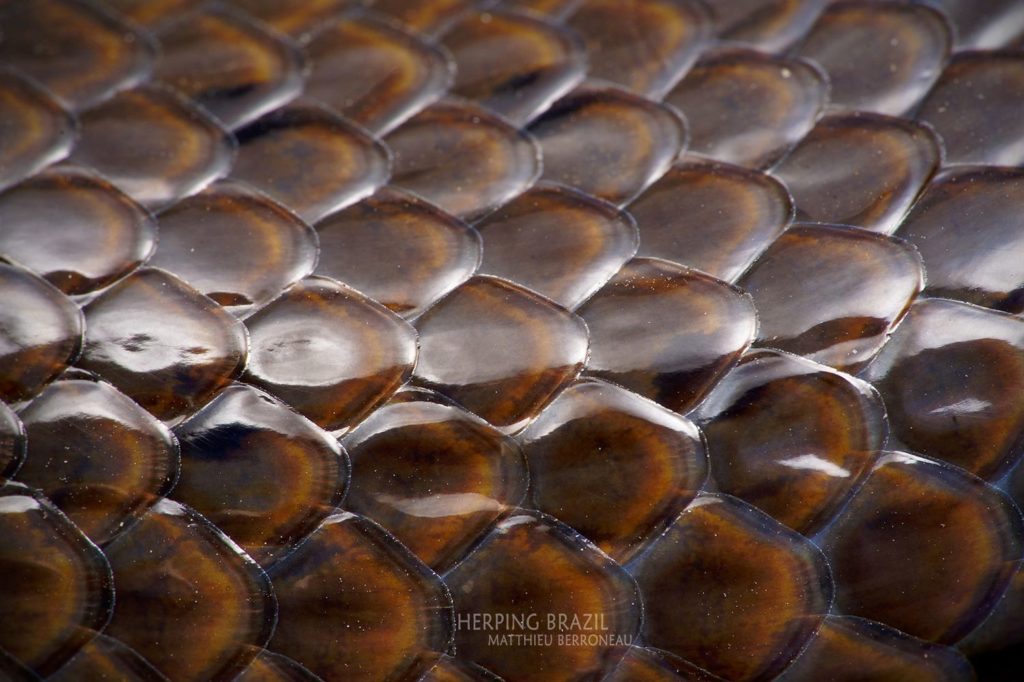
Pseudoeryx plicatilis
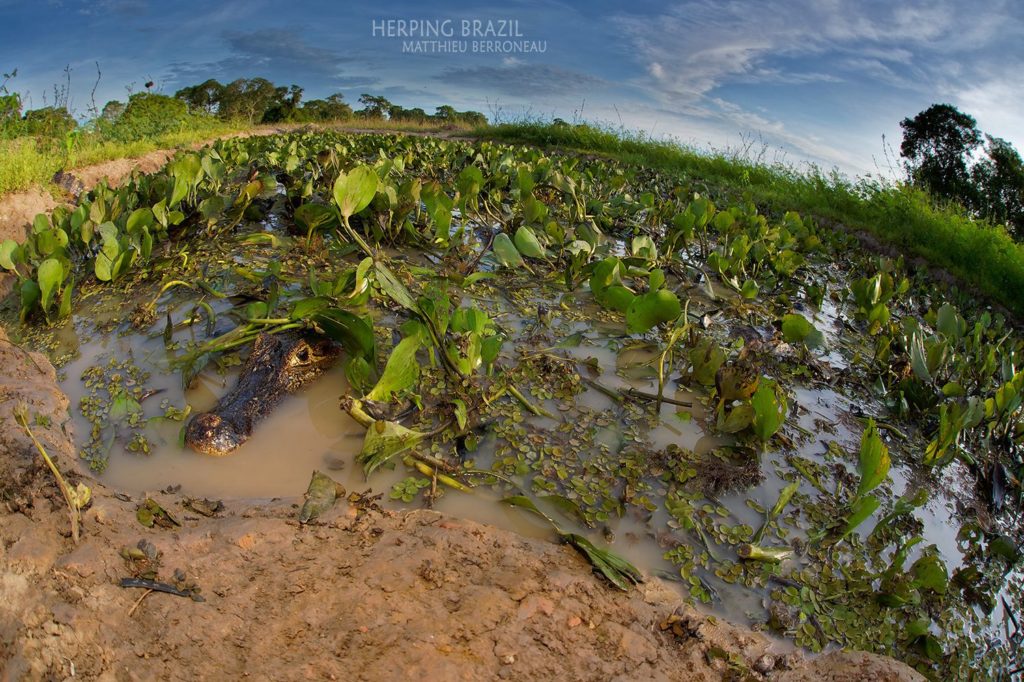
Caiman yacare
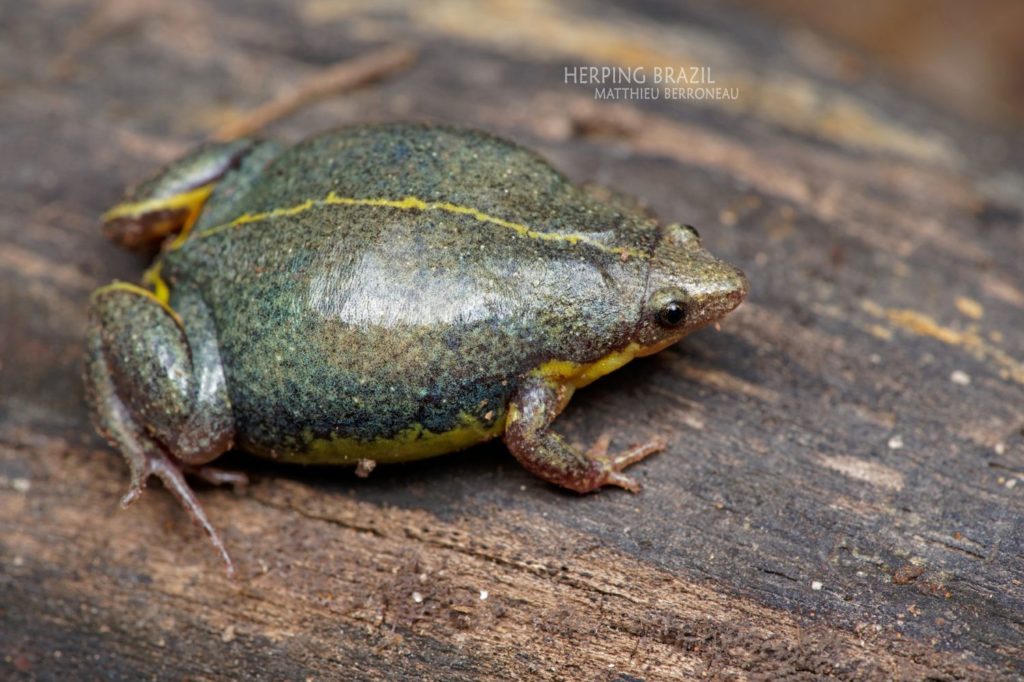
Elachistocleis matogrosso
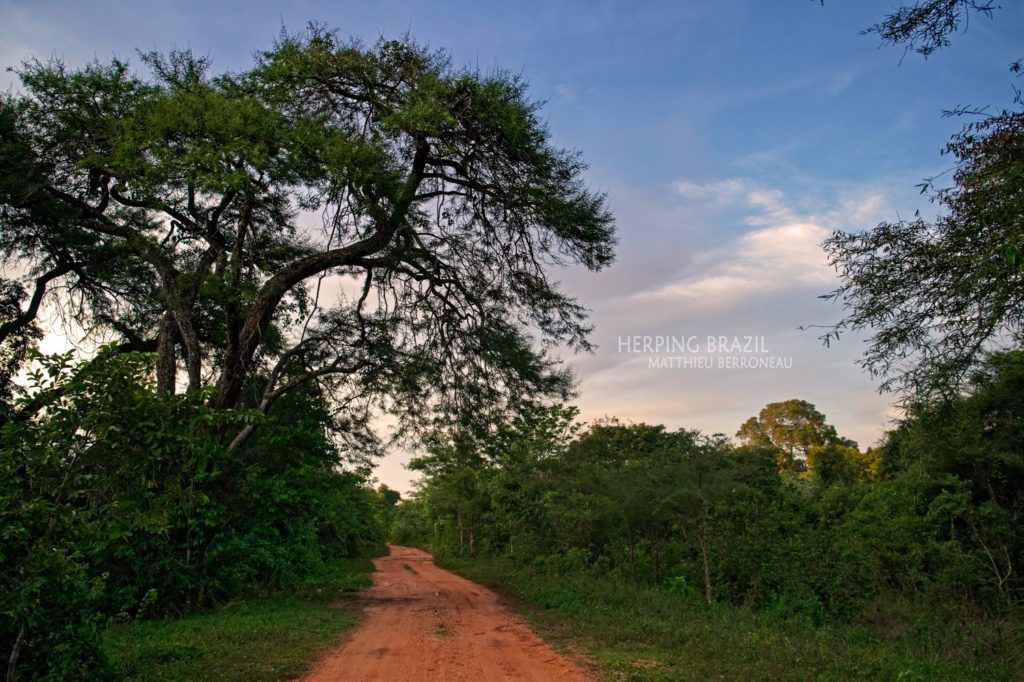
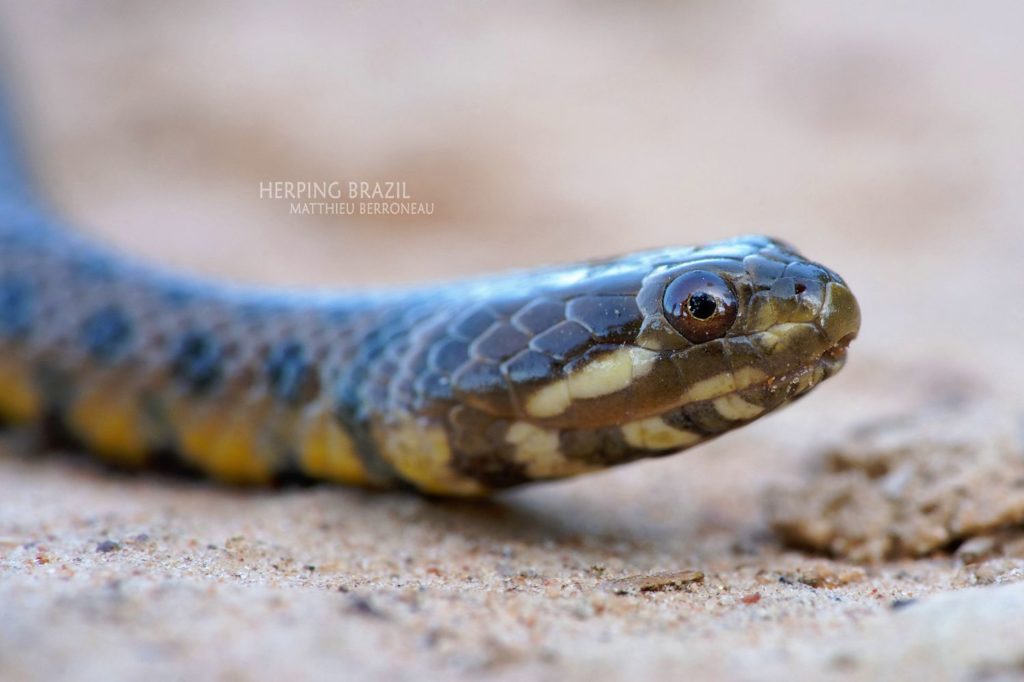
Helicops leopardinus
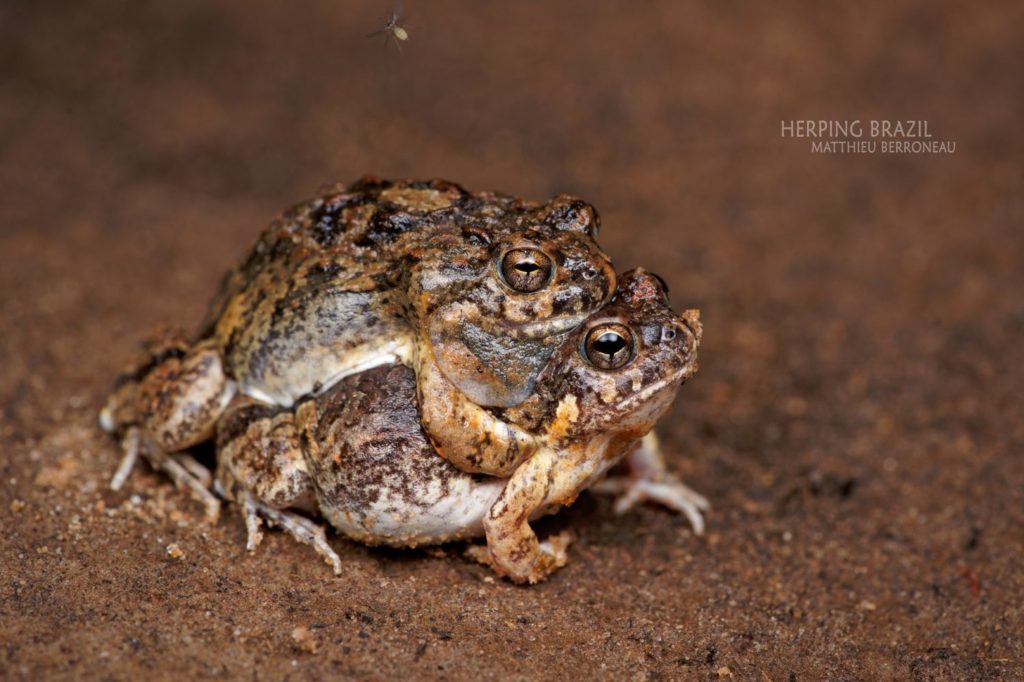
Physalaemus nattereri
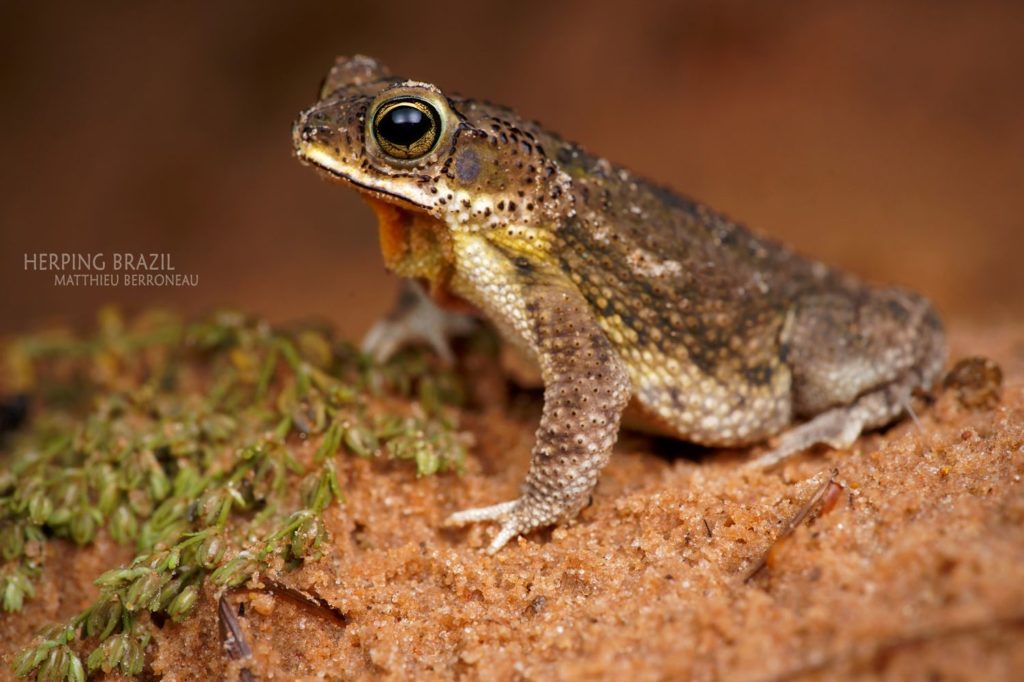
Rhinella granulosa
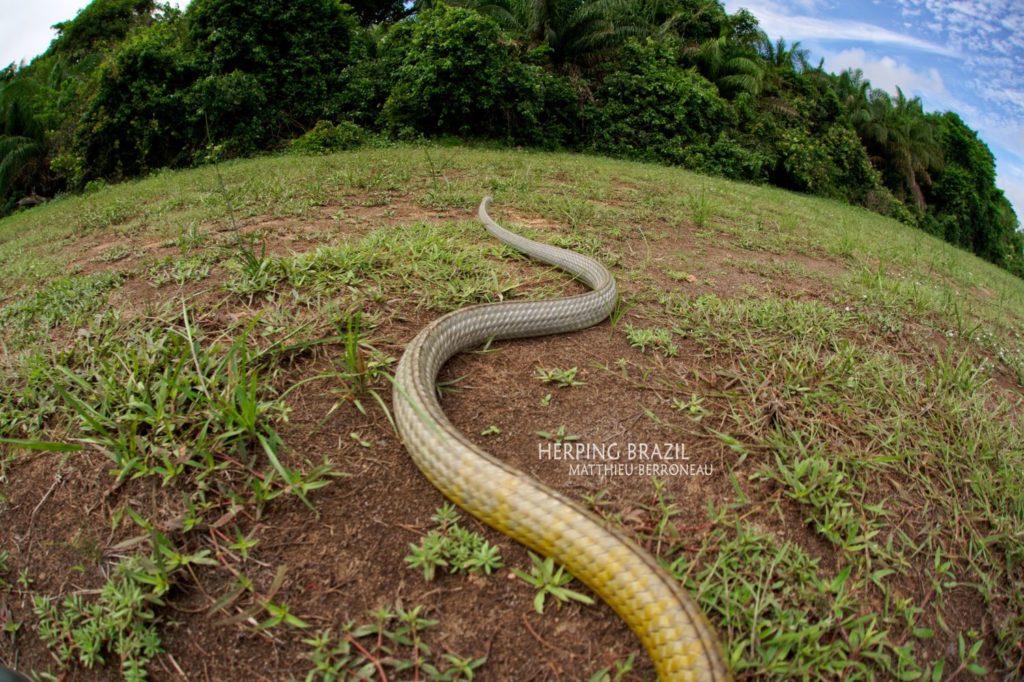
Chironius laurenti
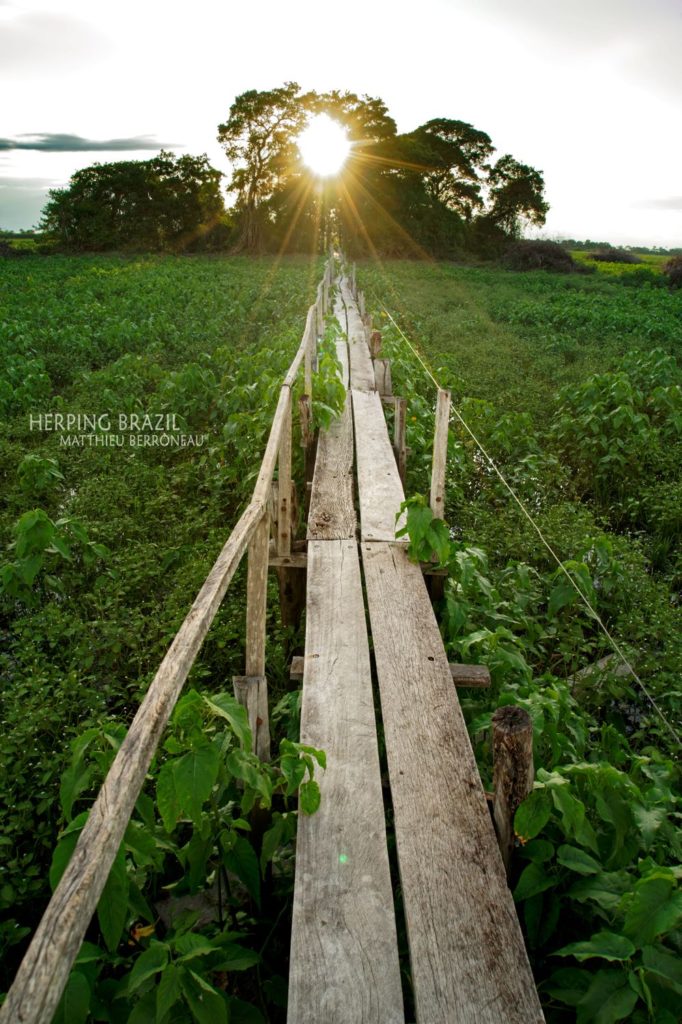
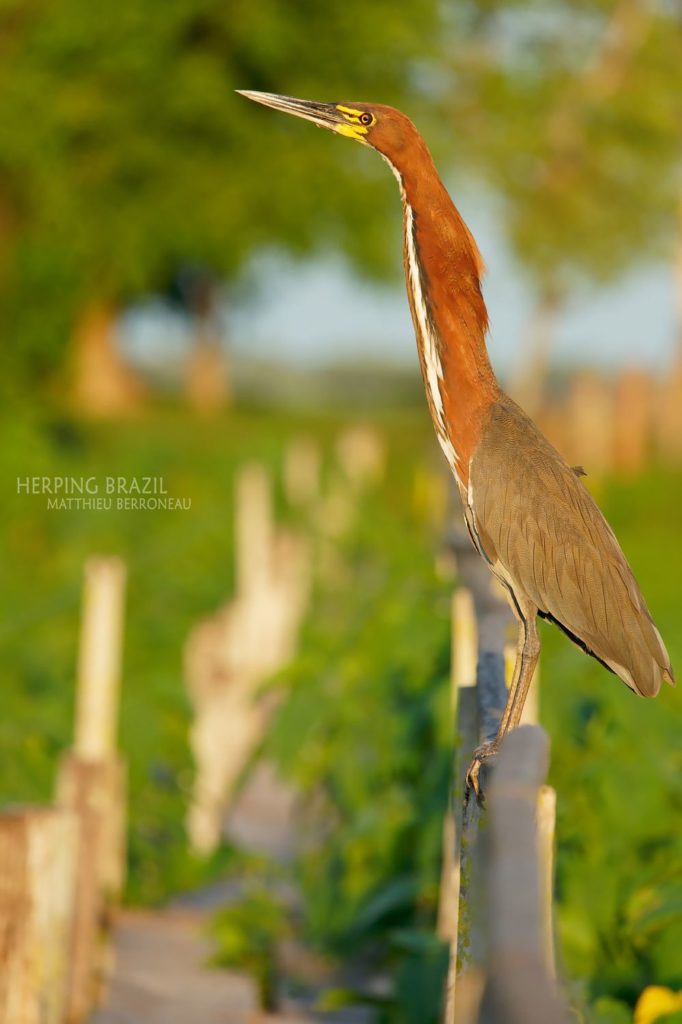
Tigrisoma lineatum
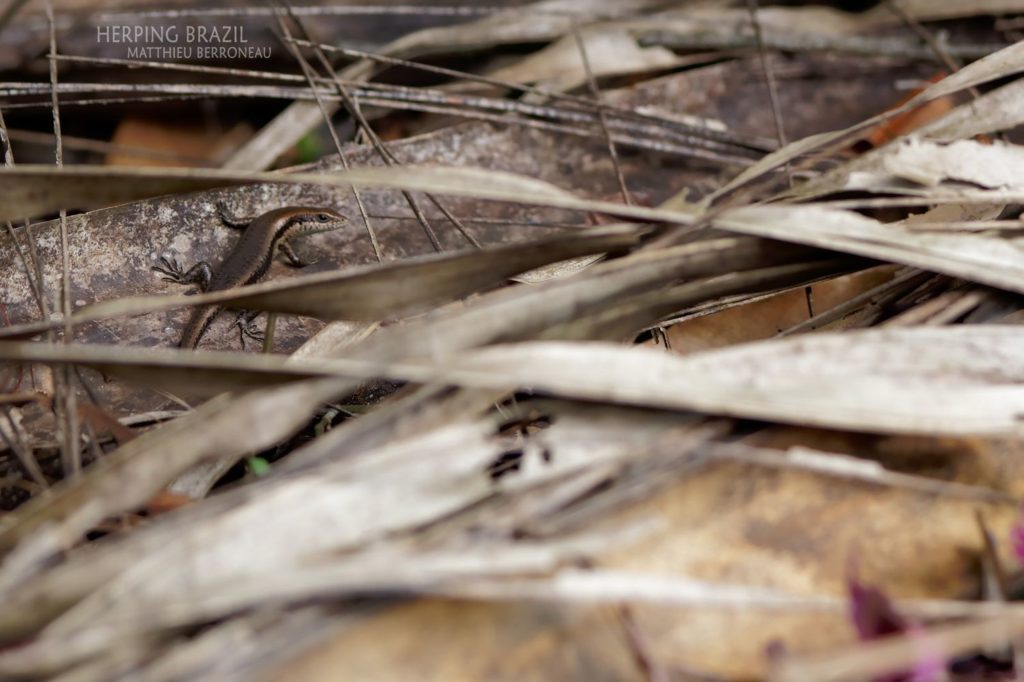
Mabuya sp. (guaporicola ?)
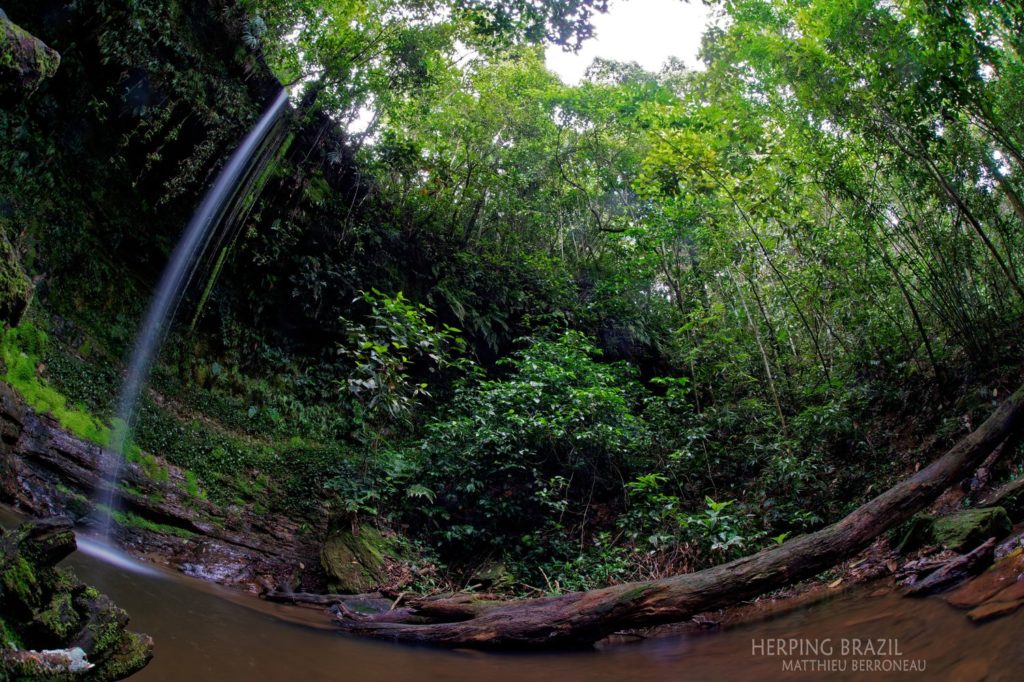
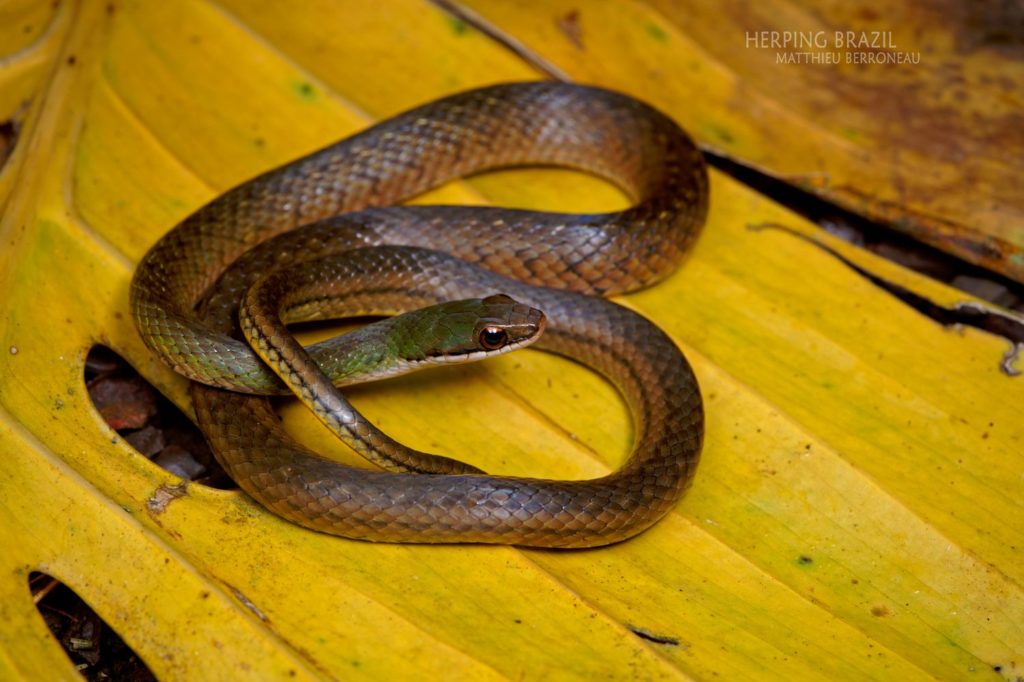
Erythrolamprus reginae
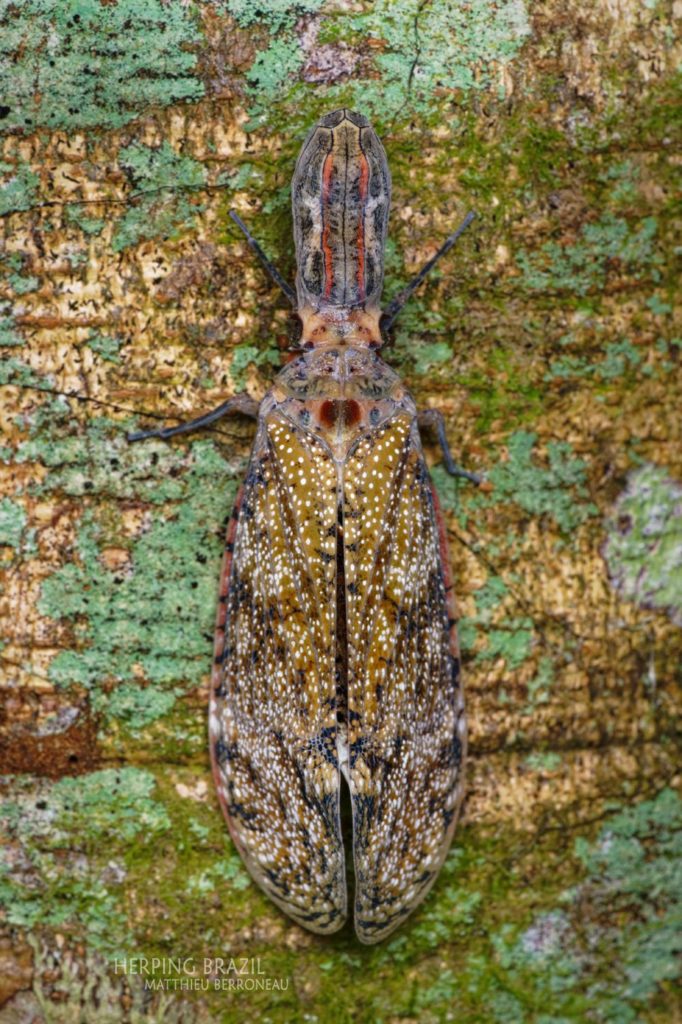
Fulgora laternaria

Bothrops moojeni
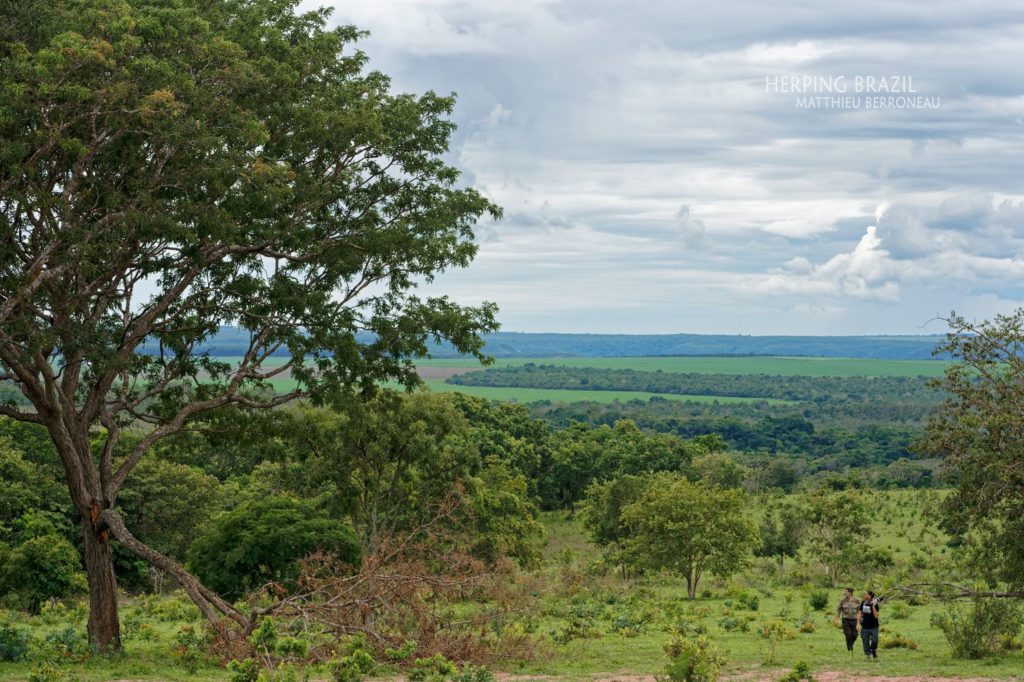
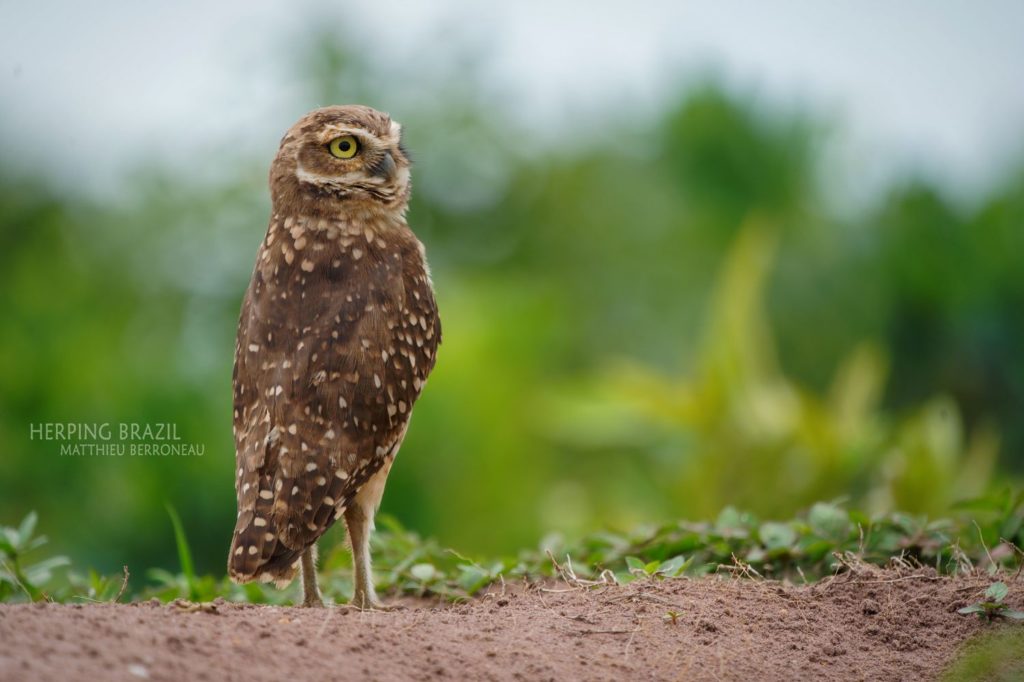
Athene cunicularia
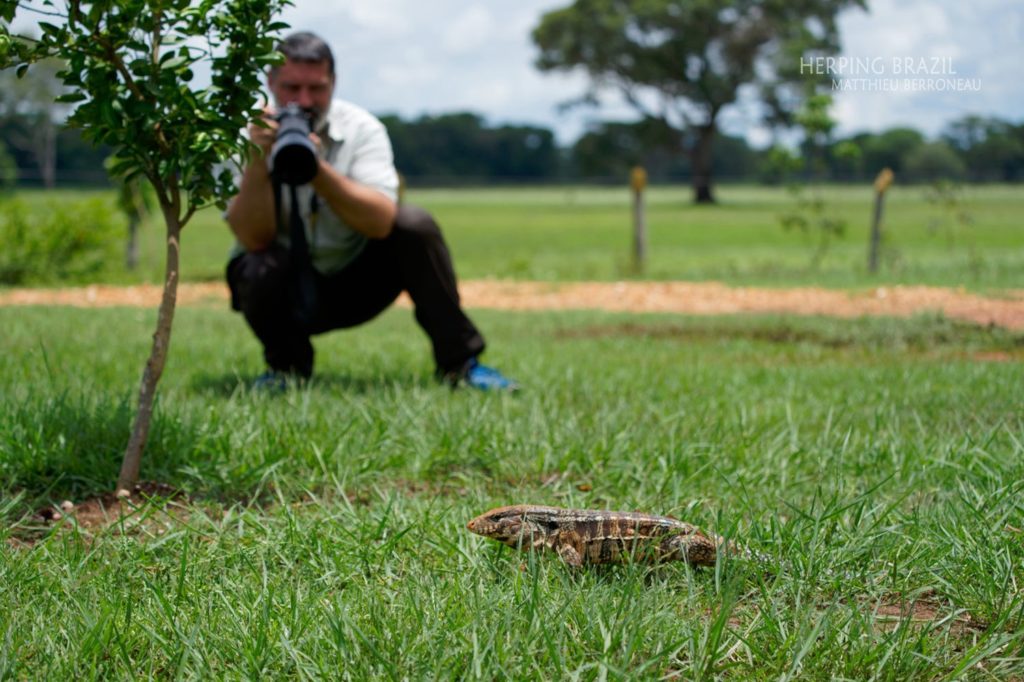
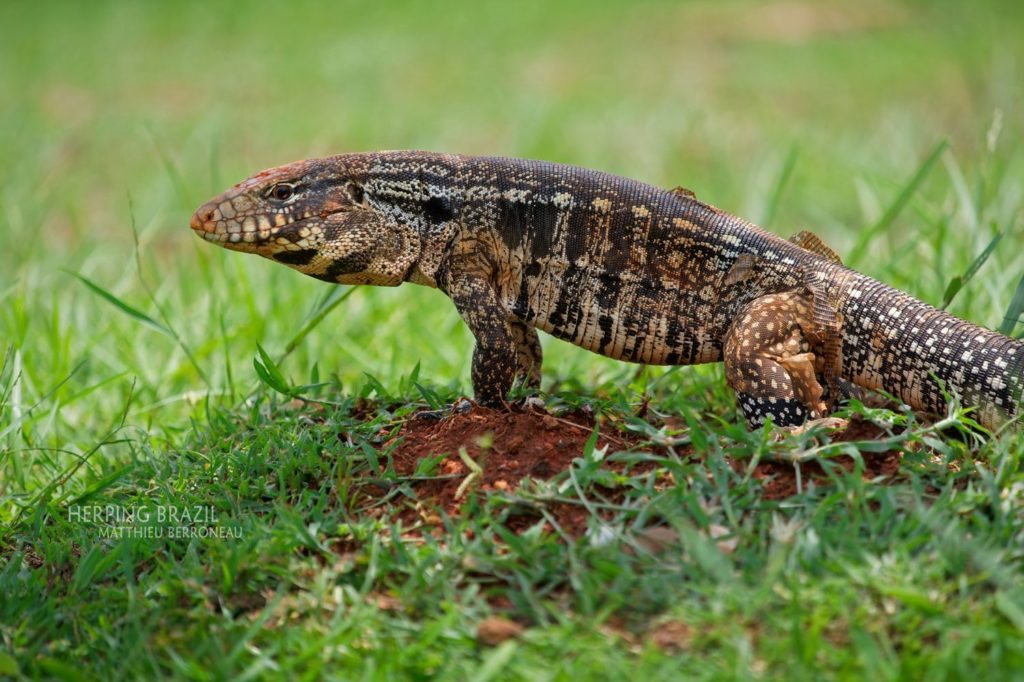
Salvator merianae
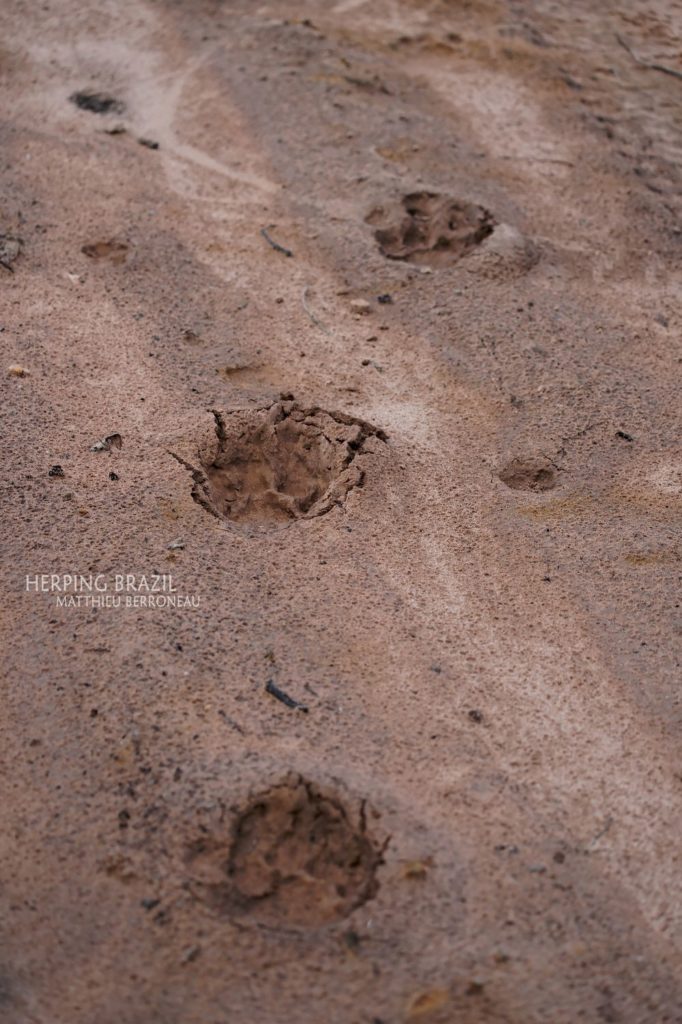
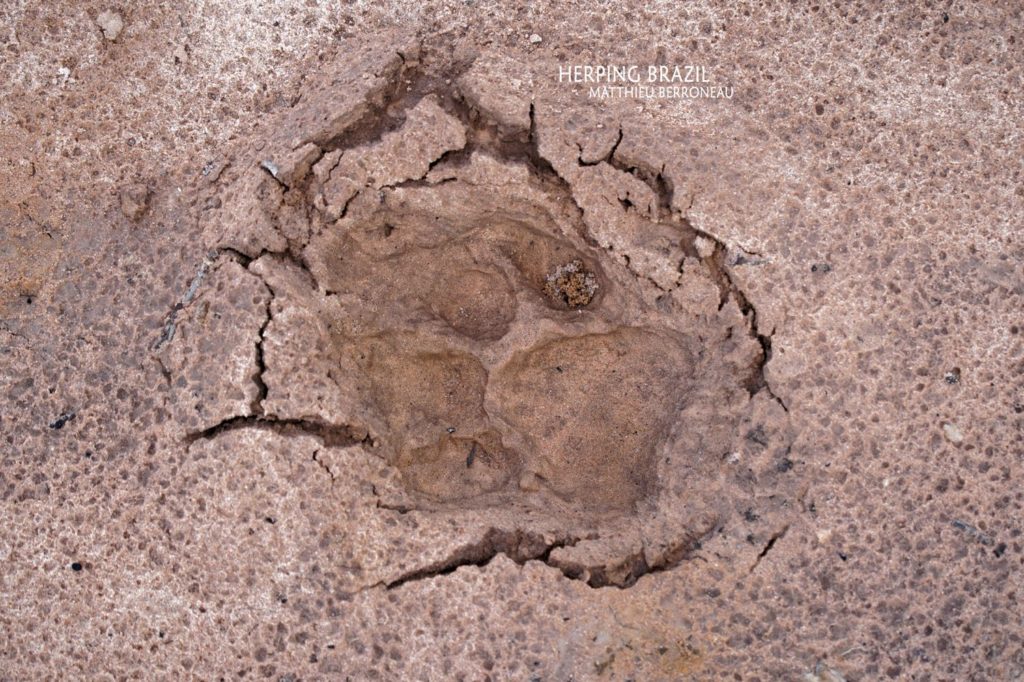
Jaguar?
Si quelques rares espèces de Reptiles “cibles” – dont l’observation reste aléatoire -, manquent finalement à l’appel (pas de “Lézard-caïman” Dracaena guianensis ni de Crotalus durissus), de nombreuses espèces mythiques de reptiles, d’amphibiens, mais aussi de mammifères, d’oiseaux et d’invertébrés ont pu être observées et photographiées. Je ne ferai pas ici de long résumé de l’expédition, mais je ne résiste pas à vous exposer quelques photos que j’ai pu rapporter du voyage, même si la prise de clichés n’était évidemment pas la priorité : les participants d’abord !
Fort de son succès, l’expédition est de nouveau proposée pour la fin d’année 2020. Le parcours, légèrement modifié, devrait garantir l’observation du jaguar ! Nous avons déjà hâte d’y être !
Pour participer à l’expédition 2020, contactez directement Erwan, de l’agence HerpingBrazil.
Ps : si vous voulez en savoir plus, n’hésitez pas à visiter le site de Kevin, un des participants de l’expédition 2019, qui propose un résumé ultra détaillé illustré de superbes clichés !
If some rare species of “target” Reptiles – whose observation remains random – will ultimately miss (No “Caiman-lizard” Dracaena guianensis or Crotalus durissus), many mythical species of reptiles, amphibians, but also mammals, birds and invertebrates could have been observed and photographed. This is not a long summary of the expedition here, but I cannot resist exposing you to some photos that I was able to bring back from the trip, even if taking pictures was obviously not the priority: the participants of on board!
Due to its success, the expedition is once again offered for the end of 2020. The roadmap, slightly modified, should guarantee the observation of the jaguar! Can’t wait!
To participate in the 2020 expedition, contact Erwan directly, from the HerpingBrazil agency.
Ps: if you want to know more, do not hesitate to visit the Kevin website, one of the participants of the 2019 expedition, which offers an ultra detailed summary illustrated with superb shots!
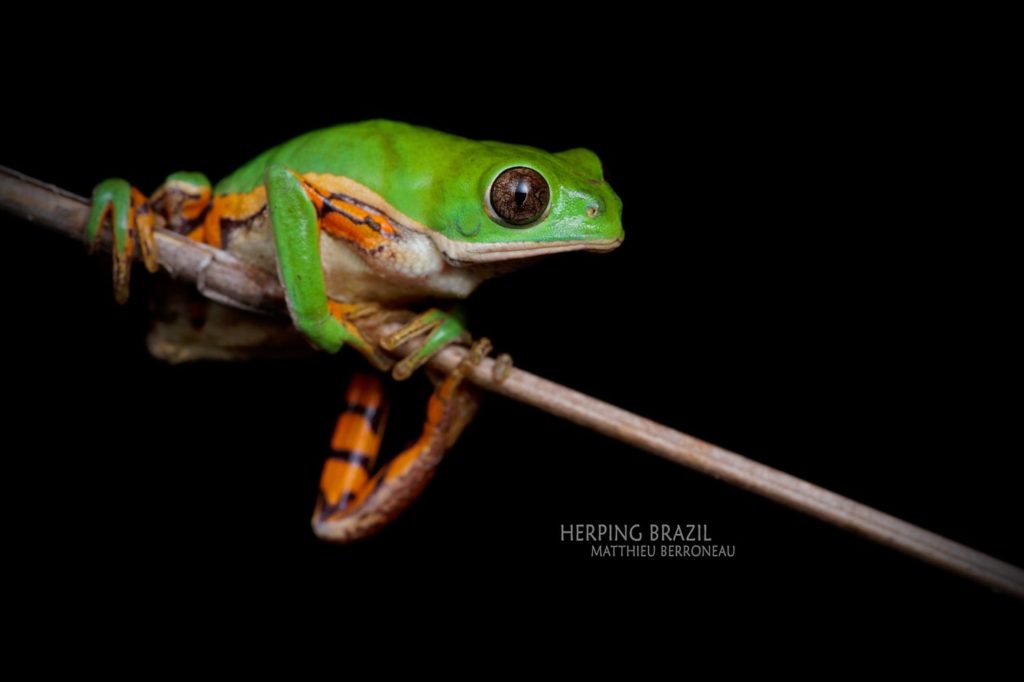
Pithecopus azureus
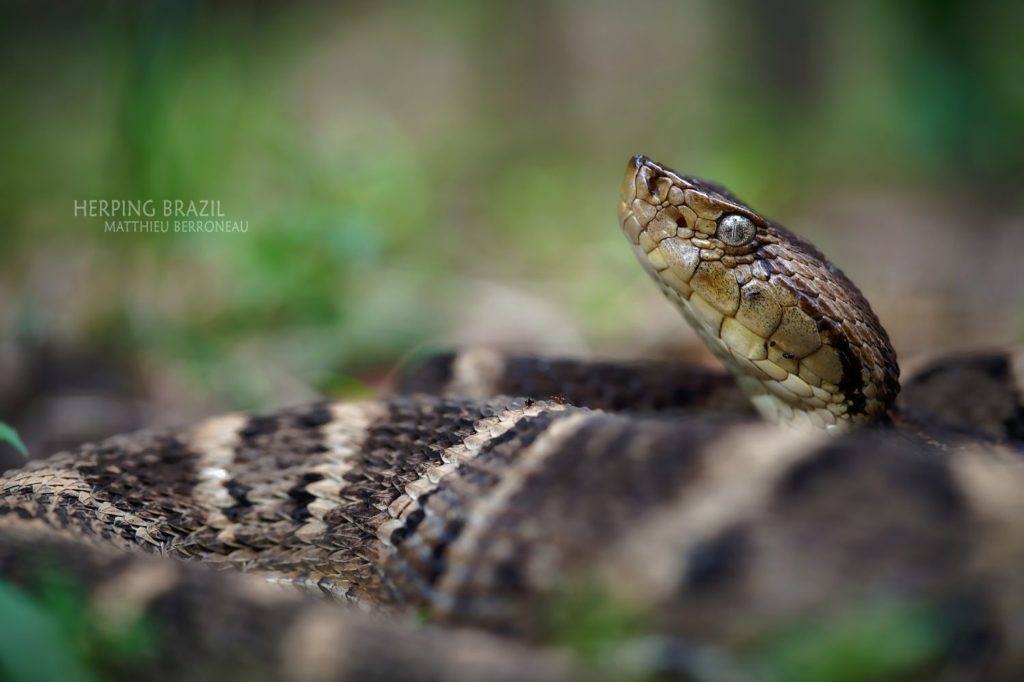
Bothrops moojeni
